Persephone van der Waard is a leading expert on Metroidvania, having researched the genre aggressively since 2017; re: from her master's, postgrad material, and PhD in Gothic poetics and ludo-Gothic BDSM. This page highlights her Metroidvania work* in its entirety (the rest of Persephone's portfolio can be found on her 18+ About the Author page); i.e., it contains all of "From Masters to PhD" (as originally posted here, on January 2nd, 2025), and links readers to a variety of other resources Persephone has produced on Metroidvania, as well; e.g., "Mazes and Labyrinths" (2021) but also her 2025 Metroidvania Corpus (details, below), the latter which compiles all her Metroidvania work from 2021 to 2025 in one easy-to-read document, while also chronicling it even further back than that (all the way back to her 2018 master's thesis, "Lost in Necropolis").
*This page's contents are essentially identical to Persephone's Metroidvania page on her 18+ website. While "From Master's to PhD" is SFW, the images here are slightly tamer than the website version's (which—through more risqué, themselves—don't include pornographic nudity).
Update, 1/6/2025: Ancillary to my work on Gothic poetics, I've just released Persephone's 2025 Metroidvania Corpus as a free PDF (doing so to allow for easy navigation using Adobe's bookmark system, below). The corpus is also SFW, combining "From Master's to PhD" with my earlier postgrad work on Metroidvania, "Mazes and Labyrinths," merging them into a single, larger document alongside extra material (originally 74 pages, v1.0; currently 380 pages, v1.39). Go to its debut page on my old blog for patch notes and the most recent download link, or download it directly from my website's one-page book promo. To ask me directly about the corpus, go to its r/Metroidvania subreddit page.
Corpus current edition, v1.39 (8/6/2025): Expanded my review for Metaquarius' X-Fusion (re: "A Beautiful Lie"), adding footnotes/small additions and correcting various small errors.
Table of Contents ("From Masters to PhD")
Note: My corpus contains the content on this page, as well as additional content (from my book series and research) not included here. The ordering of the table of contents, here, is slightly different compared to the corpus. —Perse
- Corpus Changelog [redacted to keep things short; included with the PDF version, or on the original debut blogpost]
- "Metroidvania: What Are They (my definition)?": Supplies my definition of Metroidvania, and provides an extra page of extrapolation.
- "Content Warning: SFW but…": Explains how my Metroidvania corpus/"From Masters to PhD" has been arranged to be as SFW as possible (no nudity but some exploration of sexualized violence in Gothic stores like Metroid and Castlevania).
- "Regarding My Amazon Research": Explains my Amazon research in relation to Metroidvania as I study it; gives some poetic analysis (seven pages)—i.e., to go along with the corpus' normally historical approach, analyzing Metroid and Samus Aran, in particular.
- "Joy Under Fascism" (2025) [appears in the Corpus PDF]: This essay was written to find joy under fascism; i.e., while responding to a scholar whose book I found in a used book shop after a health scare: Jill Suzanne Smith’s Berlin Coquette (2013), on sex work. Also applies to Amazons and my Metroidvania work.
- Excerpt from "What I Learned Mastering Metroidvania" [appears in the corpus PDF]: A section from my Poetry Module that catalogs my thoughts; i.e., while continuing to research Metroidvania, after my PhD's 2023 release.
- "A Note about Jeremy Parish" [appears in the corpus PDF]: A one-page response to Jeremy Parish; i.e., as my academic rival concerning Metroidvania.
- "My Critique of Jeremy Parish" (sample from "Modularity and Class") [appears in the corpus PDF]: A critique of Parish's work that I wrote, back in 2024.
- Persephone's Academic History/Contributions (terms): Sums up Persephone's academic history/contributions in one paragraph, and gives a small list of vital definitions written by Persephone, which in turn are needed for the rest of the document: "ludo-Gothic BDSM," "ludic Gothic," "Gothic Communism," "Metroidvania," and several others.
- Persephone's Work on Metroidvania: Persephone is an expert researcher of the Metroidvania subgenre, having dedicated a sizeable portion of her PhD and subsequent book series to its understanding and execution. This extensive section explores Persephone's total history regarding Metroidvania while formulating her research on it; i.e., as a praxial device, laying said praxis out, giving relevant definitions, and supplying further reading.
- Persephone's History of Formulating Metroidvania: Explores Persephone's entire history of formulating Metroidvania as a praxial device; i.e., from her humble beginnings as an undergrad in 2014, to her receiving in 2016 of an academic award that helped her get into grad school, the writing of her master's thesis in 2018 and PhD in 2023, followed by additional scholarship (and books) penned afterwards.
- Summarizing Persephone's Metroidvania Praxis (feat. ludo-Gothic BDSM): This portion articulates Persephone's history of formulating Metroidvania as a theoretical device; i.e., by examining her research in theoretical language, connecting her earlier postgrad work (from 2018-2021) to her PhD (2023) and beyond. Very theory-dense!
- Metroidvania (all definitions): Provides various definitions for Metroidvania, all of them coined in the time before, during and after 2006 (the point when Jeremy Parish was writing about Metroidvania for 1UP.com). In short, it curates a broader history of the term prior to Persephone's involvement and after her research began; i.e., as a gradient ranging from roughly 1997 to 2006 to 2014 and beyond.
- Further Reading by Persephone (on Metroidvania): Provides my entire Metroidvania corpus; also outlines Metroidvania's function as closed space—i.e., to map out and explore for various reasons.
- "Those Who Walk Away from Speedrunning" [not shown here; i.e., because, unlike the website version of "From Master's," "Those Who Walk Away" already has its own blogpost]: A short addendum (and its historical 2020 companion piece, "Postcolonialism in Doom") that addresses how speedrunning—although still important to my work—is something I, a trans woman an-Com, ultimately walked away from; i.e., while keeping my interest for Metroidvania (vis-à-vis ludo-Gothic BDSM) largely intact.
- Connections to Sex Positivity (non-profit details and series abstract): A short explanation/tie-in regarding how "From Master's to PhD" (and the entire corpus) connections to Sex Positivity at large.
- Non-Profit and Funding (donations and commissions): A short description of Sex Positivity as a non-profit book series.
- Sex Positivity Abstract
- Further Reading by Persephone [normally included in the back of the corpus; only included here in the front, for this page]: Persephone's scholarship on Metroidvania extends to several other areas of research, including Tolkien, ludo-Gothic BDSM, and Amazons/the Medusa and Amazonomachia (the monstrous-feminine). Each section, below, gives a one-paragraph summary per area of research; each webpage contains a reading list with additional definitions, essays and books that Persephone has written on these different topics.
- Persephone's BDSM Scholarship (available on its own page): Persephone coined ludo-Gothic BDSM while writing Sex Positivity (2023): the "combining of an older academic term, Laurie Taylor's 'ludic-Gothic' (Gothic videogames), with sex-positive BDSM theatrics as a potent means of camp" to challenge profit (re: the whore's revenge, "Rape Reprise"). Specifically, she introduced the concept in her first published volume, Volume Zero (her PhD, for all intents and purposes). At its simplest, ludo-Gothic BDSM combines Gothic poetics with ludology (the study of games) and BDSM power exchange; i.e., effectively using videogames as an apt comparison/metaphor while, at the same time, using the same ideas in daily life to develop Gothic Communism (re: Jesper Juul's "half-real" and Eric Zimmerman's "magic circle" taken to their logical conclusions).
- Persephone's Amazon Scholarship (available on its own page): While Persephone was introduced academically to the monstrous-feminine through Barbara Creed's 1993 book, she's consumed them all her life. Amazons/the Medusa are Persephone’s favorite monster type/style; i.e., as a kink (re: mommy dommes) and as a poetic vector to conceptualize arguments. They appear all over her book series—both through hundreds of separate, individual mentions and exhibits per book volume, but also as the dedicated subjects of numerous essays and book (sub)chapters; i.e., they embody her core arguments, ranging from her PhD thesis argument (re: "Capitalism sexualizes everything") to the whore’s revenge against profit versus nature as monstrous-feminine (re: "Rape Reprise"). To it, Amazons/the Medusa are both her academic and trans raison d’être; i.e., apart from her writing on them, her alter ego is an Amazon, as are various characters she has created in her original/fan art (with her website originally being dedicated to Amazons and femboys).
- Persephone's Tolkien Scholarship (available on its own page): While Tolkien isn't someone Persephone has written as much about, there's enough scholarship to merit its own section, and Tolkien still embodies an important aspect to Persephone's PhD; i.e., the High Fantasy treasure map and its vital role in gentrifying war (thus genocide) through neoliberal media, doing so through a cartographic refrain (re: "Canonical Essentialism"). Tolkien's refrain ties into Cameron's refrain (the shooter/Metroidvania), their combined racism (and other ethnocentric values) haunting American media from 1937 onwards (re: The Hobbit into LotR and Aliens, onwards).
- "X Marks the Spot: a Thematic Prelude (and Stable of Monsters to Slay) in Metaquarium's X-Fusion" (2025) [appears in the corpus PDF/on its own page]: Written in response to Metaquarium's X-Fusion romhack (2025). A hybrid of my 2025 Metroidvania Corpus and Sex Positivity series that hybridizes the former's historical material approach with the latter's essay-driven angle; i.e., belonging to a disparate body of essays and interviews that fall under the same basic umbrella, one that considers how best to reverse abjection mid-cryptonymy through the Amazon aesthetic (and confusion) that Metroidvania excel in.
- "X-Fusion Review: A Beautiful Lie" (2025) [appears in the Corpus PDF/on its own page]: My review of Metaquarius' X-Fusion romhack, which I call a bad game; i.e., because its lies to players ultimately make them suffer.
Metroidvania: What Are They (my definition)?
(artist: Ayami Kojima)
As of writing this, Metroidvania remain a classically misunderstood and understudied game genre. Though my definition will appear appear elsewhere in this document[1], I want to provide it, here, at the very start of the corpus; i.e., for those old-fashioned folk who still read things from top to bottom:
Metroidvania are a location-based videogame genre that combines 2D, 2.5D, or 3D platforming [e.g., Dark Souls, 2009] and ranged/melee combat—usually in the 3rd person—inside a giant, closed space. This space communicates Gothic themes of various kinds; encourages exploration* depending on how non-linear the space is; includes progressive skill and item collection, mandatory boss keys, backtracking and variable gating mechanics (bosses, items, doors); and requires movement powerups in some shape or form, though these can be supplied through RPG elements as an optional alternative.
*Exploration pertains to the deliberate navigation of space beyond that of obvious, linear routes—to search for objects, objectives or secrets off the beaten path (source: "Mazes and Labyrinths," 2019; refer to the Metroidvania page on my website for everything that I've written on Metroidvania).
[1] I.e., alongside those definitions written by other people; see: "Metroidvania (all definitions)" from "From Master's to PhD" and "Terms" from "Mazes and Labyrinths."
I would add that Metroidvania are performative places of power and sin, effectively a videogame "equivalent" of the same chronotope seen in Gothic novels or older still, operas and stage plays: the castle, but specifically a black (non-white) castle/whorehouse/den of thieves, ghosts and pirates' sex, drugs and rock 'n roll.
I use quotes because videogames differ greatly in execution from novels or cinema, but collectively uphold the same basic principles despite these differences: the exploration of tremendous obscurity, power and decay from a disadvantaged (and erotic) social-sexual position, one where a prophesized bastard or whore comes home to roost; i.e., the return of a tyrant or profligate, whose fatal homecoming emerges from a half-formed rogue barbarity/derelict, imaginary past (again usually a castle) as traveling pirate ship! Butt pirate looking for buried treasure, aka "booty" plundered through playing at conquest: Medusa's barber or the Gorgon's full bounty (the moon, below) turning the hysterectomy shears (for wandering womb) on her castrator! Intergalactic dumper reclaims the planet during castle-sized broadsides.
(artist: Persephone van der Waard)
So while Metroidvania morphology is architectural, its cosmically operatic hauntology and cryptonymy each bear an oddly whorish stamp while furthering or reversing abjection; i.e., seeking revelation and revenge, mise-en-abyme, their "peachy doom" evoking land and labor (therefore sex) back: as "end of the world," per Capitalist Realism occupying the same place we want to transform. Capital, then, wholly seeks to run off state shift by scapegoating its victims, policing the whore-as-warlord embodying "Roman" end of days; Medusa's prodigal return is capital's end, a reckoning whereupon Gothic (gay-anarcho) Communism announces and celebrates state doom, "on the Aegis." She's the state's dirty little secret—a record to expunge, witness to threaten, vermin to purge, or ass to blast; i.e., less Coleridge's "stately pleasure dome" and more Walpole's mysterious mother speaking to "secret sin; [an] untold tale, that art cannot extract, nor penance cleanse": as something published only after being uncovered, pirated and passed off as someone else's work (source: Project Gothic). Creation is always, to some degree, an act of exchange, of theft, of war.
Yet cryptonymy also goes both ways, Ozymandias a pimp-like offshoot of older liberatory gods embossing the mirror's shapely surface; i.e., with their own arcane, "brickhouse" symbols showing power as always in decay (and forever being rewritten, below)! "She mighty mighty!" the little whore in tune with Nature herself as stacked, yet another castle to explore (and raze) as Metroidvania routinely showcase: hectoring the slut, the warrior nun punching pirates, mid-kegels, while capital—shrouded in open secrecy—shamelessly topples its own governments (and peoples) to stay in power. "Crew expendable."
I digress; there's always another castle and those ideas (and their interminable cryptomimesis) go far beyond the scope of this corpus. I recommend "Paratextual (Gothic) Documents" and "Gothic Communism Logo Design" to learn more, but also "The Quest for Power" and "Castles in the Flesh." Also, refer my book series' grand finale, "It Began with a Whisper"; i.e., when it releases, on June 1st!
—Perse, 5/27/2025
P.S., While the corpus remains predominantly historical, "Regarding My Amazon Research" briefly examines Metroidvania's poetic side.
(artist, right: Frank Frazetta; source: left)
Content Warning: SFW but…
Despite being devised in association with my Sex Positivity book project (the latter of which delves into NSFW material, sex work, Communism, etc), this corpus has been curated to be as SFW as possible; i.e., by having no nudity contained within (the closest being illustrated images of Samus Aran in a bikini, and several photographs in the "Connections to Sex Positivity" addendum showcasing bikini shots [similar to below] or bare butt cheeks demonstrating an artistic nudity style). However, the corpus does link to many NSFW pages, including my 18+ website (and the Sex Positivity project as a whole). Keep that in mind!
Topics to cover (in bold font, over five pages): reading level, content warnings, informed consent, and discussions of sexual assault (through Gothic poetics/open usage of the word "rape").
(artist: Persephone van der Waard)
First, the reading level for this material is probably more advanced academically than teenagers (and most adults) can handle, but in terms of its sexual content, there really isn't anything here that visually merits an R-rating. Despite the bikini scenes in Super Metroid (1994), for example, its ESRB rating is literally "'E' for Everyone."
That being said, there are some content warnings to be had for this corpus; i.e., given Metroidvania are Gothic, and the Gothic historically revolves around rape: as something for society to dig up and reconcile with in doll-like, graveyard varieties (so-called "live burial" as the Gothic do). So while this corpus focuses mostly on Metroidvania (a kind of maze-like, labyrinthine, undead/demonic doll house), it remains nonetheless related to Sex Positivity. And while the latter includes Metroidvania in its arguments, it likewise focuses more on ludo-Gothic BDSM. As such, said BDSM (and the unironic rape it tackles through ironic poetics and play during Sex Positivity at large) haunt this corpus anisotropically to some degree (a bit like a long-lost relative, below). So does a broader spectrum of good and bad actors, play and faith, etc, occupy the same larger sphere that corpus and book series explore, side-by-side: a mystery to solve, but also a Promethean Quest and/or Faustian bargain to peg us out with. Sensations of "death" become the vector for new learning (e.g., "Counting is fun!").
(source)
Metroidvania or not, my work takes this duality into account. A holistic, liminal combination of various means of Gothic roleplay infused with kinks, fetishes and therapeutic ideas, ludo-Gothic BDSM is—at its most basic—essentially RACK/consent-non-consent, aka "rape play"; re (from "The Roots of Camp"):
The Gothic mode more broadly tackles rape fears through calculated risk; i.e., as a profound means of potential camp. Genderqueer camp of the "twink-in-peril" (re: Gregg Araki and Dennis Cooper's "twink exploitation" work), for example, is an equally legitimate form of the cathartic rape fantasy model that ties into consent-non-consent during rape play more broadly—with consent-non-consent being on the harder end of what ludo-Gothic BDSM, as a spectrum, encompasses. Per my coinage (and subsequent arguments), ludo-Gothic BDSM introduces a game-like element of emergent play into traditional BDSM; i.e., married to Gothic poetics and roleplay scenarios (e.g., kidnap, live burial, rape, murder and monsters, etc). By extension, consent-non-consent, or RACK, is essentially a "hard" form of informed consent that puts more trust into the hands of the dominant/dominatrix than usual;
consent-non-consent
Negotiated social-sexual scenarios through informed consent, consent-non-consent where one party surrenders total control over to the other party trusting that party to not betray said agreement or trust; aka "RACK" (Risk-Aware Consensual Kink) in relation to risky BDSM; i.e., bodily harm; e.g., public beatings, rape scenarios, whippings, knife play and blood-letting.
i.e., wherein the dom is the person ostensibly with "more" power during the BDSM ritual and the submissive/sub is the person with "less." As we shall see, looks can be deceiving (source).
By extension, ludo-Gothic BDSM per Metroidvania concerns Gothic castles that you can literally play inside while being outside the actual structures (exploring them through avatars, thereby introducing an added layer of safety to a simulation, which novels historically were not); i.e., "if you want to interrogate power, you must go where it is" (a "danger disco," as I call it). Sometimes the risk is merely being triggered (versus being harmed directly by an immediate physical threat), making the paradox of healing from rape (actual or imagined) the effort to gain elements of control over the introduction of "dangers" that seem harmful but are not (exceptions being hard kink, hence RACK); i.e., "hurt, not harm" through an aesthetic you can play with and out as needed.
Therefore, to heal from rape at a societal level is to minimize the risk of harm inside and outside anything we directly control, mid-Gothic. That's what camping the canon during ludo-Gothic BDSM is all about; i.e., to raise intelligence and awareness not just in our lives, but through the dialectical-material context of what we leave behind (art commonly be made to point to persecution as often as liberation, below); re: Marx' Superstructure something to recultivate away from state models of profit (thus prevent rape as it normally occurs through the state's regular policing of nature as monstrous-feminine—go to "Connections to Sex Positivity" to have this idea unpacked further). To reach new heights, then, you first have to understand the lows that make them feel "high" to begin with—not by subjecting yourself to fresh harm, but generally by understanding the harm you've previously survived as something to avoid while flying high through play (chasing the Numinous during calculated risk): "harm" in quotes, seeing Medusa while reversing abjection (us versus them). Exposure is strength provided we demonized can humanize what is normally harvested by the state in bad faith; i.e., through the language of persecution taken out of their hands and placed into ours:
(artist: Persephone van der Waard)
To summarize, this corpus doesn't delve into overt BDSM or its execution, but it does mention and link to it through Metroidvania's buffers leading you towards performative "danger" that—if treated carelessly or in bad faith—can lead to actual harm; i.e., in ways that require some degree of attention and care when discussing topics outside itself (or chiastically itself in outside topics). Similar to how a fake "corpse" can seem like a corpse, an actress playing a damsel-in-distress while ostensibly faced with the rapacious peril of a black knight (or vampire, shadow demon, etc) can legitimately distress onlookers if they don't know it's an act (or even if they do know it's an act, for those of us living with trauma).
The idea, here, is informed consent, which requires giving clear, obvious invitations to then safely process whatever lies beyond a given barrier before, during and after bypassing said barrier (commonly conveyed using the traffic light system: green light, yellow light, red light). So yes, exposure to opaque menace/tremendous obscurity and decay (and its Numinous rapture behind, and in front of, the usual Black Veils) is very much the point, in Gothic; i.e., to overcome generational trauma by living with it in safe, "dark," cryptonymic forms that feel cloudy and intense on their Aegis, mise-en-abyme. Even so, I'm still giving you a barrier to work with, here. Consider this Persephone's invitation into Hell, should you choose to accept it. Break on through, if you dare! There's room for one more in Charon's canoe…
(artist: E. Debat-Ponsan)
Regarding explicit triggers, then, sexual abuse is discussed within, including the word "rape," but collectively happen through the poetics of "rape"; i.e., as something to camp, hence play with, as the Gothic does; re: through rape play as arranged through different artistic forms that are commonly sold to children (of which this corpus, again, focuses on Metroidvania and its half-real application: crossing over into other forms of media and real life, on and offstage).
There's really no way around such naked, oft-pornographic usage and its famous oscillations in Gothic, but we will try to be as clear as possible through this corpus' darkness visible (and respectful of the heavy subject matter inside). Given how the ostentatious shock and awe (terror and horror) of performative rape are mainstays of the mode at large (and to sanitize or omit the word "rape" entirely is to miss the point of playing with such things to begin with), the performances themselves walk the tightrope between silly and serious. Even so, they remain ever-and-always haunted by actual psychosexual abuse sitting adjacent to them and their rapturous coups de grâce (re: Hogle's ghost of the counterfeit, the obvious churchly fakery haunted by spectres of actual genocide, be that sexual assault or otherwise).
However cute or innocent something might otherwise seem, then, there's always dark shadowy doubles close at hand—teasing out increasingly extreme (and ominous) forms of violence, nudity and danger through an aesthetic of power and death centuries old! "We live in Gothic times," and the state pimps us out through ourselves (or shadows of ourselves); i.e., whores policing whores, prostitution the oldest form of labor, therefor labor exploitation (which we must reclaim from the elite on all registers while avoiding tokenization; re: the whore's revenge against profit and pimp, police and politician)! Keep that in mind as you proceed!
(model and artist, top-middle: Itzel Sparrow and Persephone van der Waard)
Regarding My Amazon Research
Although Amazons/the Medusa and Amazonomachia aren't the primary focus of my PhD arguments, they feature heavily in Metroidvania and many of my essays, close-reads and past-and-future research; i.e., in various arguments relating to my research; e.g., capital antagonizes nature as monstrous-feminine to rape it for profit as cheaply as possible (re: "Nature as Food" and "A Cruel Angel's Thesis"), which Amazons/the Medusa often feature in (re: "On Amazons, Good and Bad"). To it, I've created a specific page which compiles all of my research on Amazons. It's a lot, and to keep things as short as possible, I've tried not to list the same articles that appear here, in this corpus (which also interrogates Amazons, but to a much lesser degree). —Perse, 4/26/2025
(artist: Persephone van der Waard)
Against my initial decision, I've decided to include seven pages of poetic analysis regarding Metroidvania and Amazons; i.e., as food for thought to supplement the corpus' primarily historical approach. While seven pages might sound like a lot, it's only a taste; for the main course on Metroidvania (as far as poetic analysis goes), consult "Further Reading" to access writing tied to my larger book series. Also, these broader critiques apply to Metroidvania as both corporate and indie projects—with the former tending to be more canonical (as Metroid and Castlevania are) and the latter more iconoclastic (as Axiom Verge and Hollow Knight are). —Perse, 6/20/2025
In layman's terms, Metroidvania are castles; re: black castles that cops routinely explore to police any whores within; i.e., including the Amazon as token cop—a conflicted, secret-whore assimilator traitorously punching down at open whores they mutilate but also imitate (above). White versus black, save in fascist "mil spec" forms of the dark side; i.e., operating in fascist DARVO/obscurantism, fetishizing the grim harvest in all the usual ways: through violence disrobed, Amazons the embodiment of power abused through police force against an enemy fortress (and its occupants).
Put differently (and in more academic language), Metroidvania are the home as alien, evoking horror and terror in monstrous-feminine language; i.e., to literally run through (and skewer), mise-en-abyme ("placed in abyss"). They are liminal, meaning designed for motion through, and in ways that compel and relay history as circular and ruinous: through architectural motion, be that labyrinth or maze; i.e., as also having anachronistically morphological elements ("huge tracks of land!"); e.g., a haunted house, empty dungeon, ghost ship, or similar self-contained, circular suggestion of the barbaric home as magnetically fatal and cryptomimetic.
Metroidvania are witch hunts mapped out, leading to a foul center to stab the heart of (echoes of the Cartesian Revolution and Francis Bacon). "Black" = whore as witchcraft, sodomy and similar "terrorist" states of exception entered by fascist doubles; i.e., aping their foes projected, DARVO-style, onto an alien menace; e.g., trans people and racial minorities, but also their outmoded cultural signifiers tied to drug wars, crime waves, and rape epidemics (re: "Concerning Big Black Dicks," 2024). Something of a black hole, they poetically represent Hell: a forbidden zone to enter and plunder at seemingly great risk/reward (re: the monomyth). Occupied classically by monsters (which whores are), the Gothic-as-home reflects these back onto viewers, mid-abjection; i.e., the home in Metroidvania paradoxically resembles Humanity as partly alien, therefore contradictory—meaning in seemingly impossible ways that invite investigation, therefore disaster when explored through abjection: "We are siblings, and capital will destroy you, too—as part of the very land it routinely exploits for profit!" "Aegis" = home and occupant on dualistic tracks.
Per Creed's seminal work, the Gorgon is a demonic, undead terrorist with animal components: "When Perseus slew the Medusa he did not – as commonly thought – put an end to her reign or destroy her terrifying powers" (source: The Monstrous-Feminine, 1993). The idea stems from Athena's Aegis effectively being Medusa's—one exemplified by virgin/whore as recruited to canonically serve profit via Metroidvania's tokenized police role: the destroyer to copy thus become, punching down against nature as alien, chattel, vermin, insect, etc, as "phallic" (the criminal with a knife, but also the rapist whose rape hyphenates with murder). While such cheapening can be camped through Amazonian nudity[2] (as I do with Amanda Ripley, left), doing so is regrettably optional.
(artist: Persephone van der Waard)
Abjection, per the Neo-Gothic period into its later stages, classically uses fakery to denote the Western self—and bloodline/nuclear model said self attaches to—as false; i.e., the Metroidvania defacing such things, grave-rubbing-style: through Amazonomachia ("monster battle") scolding Medusa for wasted eggs (e.g., the queen's brood, or Mother Brain's metroids). Tied to house and home, her lair is famously occupied by anxious echoes of ongoing confusion and betrayal; i.e., Hogle's ghost of the counterfeit leading to what I call "mirror syndrome" (re: "Always a Victim," 2024); e.g., Samus being a Hippolytean hostage/refuge punching Mother Brain, the fugitive extension of her own criminal self—the Gorgon impostor to preemptively hunt down out of revenge and kill, time and time again.
Per Hogle, the West is fake, its sovereignty explored as such[3]; per me, "The Western world is generally a place that testifies to its own traumas by fabricating them; i.e., as markers of sovereignty that remain historically unkind to specific groups that nevertheless survive within them as ghosts of unspeakable events linked to systemic abuse" (re: "Healing from Rape," 2024). Per generational theft and trauma, nature is monstrous-feminine (re: "Nature Is Food," 2024); "antagonize nature and put it to work as cheaply as possible" (re: "Policing the Whore," 2024). The state is a brothel full of mirrors, then; i.e., show the Aegis for cops to punch down with/at, per all the usual monopolies and their horrible outcomes: "gaslight, gatekeep, girlboss"; "assimilate, gentrify and decay."
As the world's oldest profession, prostitution suffers Puritanical exploitation under a cloaked ethic (whose nudity is also a TERF-like mask, below); i.e., through monstrous-feminine language as authored by Neo-Gothic backlash (re: Crawford): the creation of nature as increasingly other (a rival monarch femme fatale as Archaic Mother vs the phallic woman/subjugated Amazons' pro-state revenge, left). A vaso vagal thing to disrobe and terrify rebellious workers with (which Amazons were classically used for in Ancient Athens), it informs future discourse about rape and its castled legends; i.e., on both sides, onstage and off. In keeping with witchcraft accusations, the state scapegoats the Gorgon, the Amazon a cop to turn against nature—with corporate Metroidvania's subjugated Amazons pacifying resistance to neo-con war felt routinely between Vietnam and the American home's Nintendo Entertainment System.
(artist: Persephone van der Waard)
So do state proponents police, thus pimp nature with Amazons, in corporate Metroidvania, and which players classically occupy in terror/counterterror pursuit; i.e., of whores to punish through staggering reprisals leading to marginalized in-fighting. Samus is an Amazon, therefore warrior maiden haunted by her own virgin/whore shadow as caught between two worlds; i.e., demanding guerrilla-style vanquishment through optimistically ritualized military force passed down from cop to cop, policing home's shaky inheritance eating itself: on the same surfaces' roiling kayfabe that, when employed, entertains actors of ambiguous faith. She's a false steward whose female burden of care inverts, killing animals (and—by extension—all of nature, including its darker, regal, Indigenous elements, above): to fulfill the homewrecker gaslight that whores historically endure under Capitalist Realism.
While assimilation is poor stewardship/an Omelas refrain, and policing is inherently scummy on its face, police states have secret cops echoed in Metroidvania; e.g., Samus is a secret pimp with not-so-secret victims, behind whose routine forgeries conceal—in naked/semi-naked body language—capital's regular genocides. Rebels and cops look alike, confusing rape and consent in ways that—harmful or not—must be taught through stories; i.e., about the naked avenger who fights back against evil, including Metroidvania and their own fatal nostalgia/generational trauma as themes to undress: during ludo-Gothic BDSM camping silly-serious myths about rape; e.g., "death by Snu-Snu" and all the usual copagandistic, white-savior (thus white-Indian, below) fear and dogma; re: Asprey's titular shadow warrior haunting stories echoing asymmetrical warfare, as Metroidvania do. So does history sit between inventions like Metroidvania, rebel factions fabricating a chorus of protest the state can only forge and replace: whores policing whores through rapist/victim arguments built on a kernel of truth to justify endless witch hunts.
While such Amazonian mimicry and abuse are limitless, Metroidvania take state force to hyperbolic levels; e.g., Samus is a genocidal maniac who kills planets resembling our own, her planetary mayhem a perverse form of courtly love[4] for the state having alienized her from her fellow people. So she punches down all the harder out of desperation and embarrassment (re: Federici, cited in "Hot Allostatic Load," 2015). Fetishizing war (and rape) to orgasmic, pornographic extremes, the Amazon is the oldest token of the West; i.e., the white female knight versus the black, the good-girl subjugate soldiering for Pygmalion, thus the Patriarchy and Imperium, versus a sodomite Galatea profaning "Rome." The state hunter less turns a blind eye, and more becomes the eyes, ears and arm of the state; i.e., on its usual virginal, panoptical language of conquest; re: the treasure map and pirate gun (from Tolkien and Cameron's refrains) as heirlooms for les enfants terribles pulled from the slum (Samus—echoing Newt's tragic cycle as colony-brat-turned-poster-girl—working on par with James Cameron's other neoliberal war brides; e.g., Corporal Ferro left).
(artist: Persephone van der Waard)
To it, Metroidvania narratives reify motion through questionable inheritance—one whose compelled, retro-future exploration stubbornly interrogates the cyclical rot (and regeneration) of state dominance. Occurring through an endless Promethean Quest, said questing (for the Numinous[5]) inverts monomyth actions (and delusions) using poetically "heavy" evocations of space-time; i.e., advertising as "Gothic" through not just dynastic primacy and hereditary rites (re: Bakhtin), but assorted loanwords mashed crudely and clumsily together like Lovecraft's "horror in clay"; e.g., as Metroid and Castlevania were, long after Lovecraft "bought the farm": as historically-materially reluctant, vengeful and neo-feudalistic—a dialectical-material aesthetic whose vicarious premonitions reify as Gothic chronotope enacting infernal concentric pattern (see: "Persephone's Academic History"): a Gothic castle, aka liminal hauntology of war—one conducive to hellish movement/grim harvest as barbarity and tyranny come home to roost once more. Samus is Michael Myers, coming home to avenge the Man, and far from the only one (e.g., Ayla from Chrono Trigger [1994] being similar "muscle," left)! The whore cop to disrobe like Supergirl, she exposes herself to destroy those she calls "rapist." It's a false pirate flag—one waved by a savage, functionally white animal woman tamed by the state to police her own.
(artist: Persephone van der Waard)
Built on Rambo-style revenge, Metroidvania are videogames and only videogames, yet whose neoliberal, Pax-Americana refrain borrows from even older stories; i.e., Amazonomachia. Emerging when modernity (specifically the Enlightenment) failed to deliver on its own bad promises, older Gothic fictions spoke to the perceived end of capital; i.e., as fearfully decaying backwards before they knew fully what it was, meaning before Shelley and Marx saw civilization as haunted (re: "Making Demons," 2024). By that same token, fascism is Capitalism in decay defending itself, meaning through heroic language as stolen from workers, back and forth. All this "triage" shares one theatre, playing "darkness visible" out through magic and mad science. The colonized must decolonize the usual us-versus-them territories, including their poetic offshoots' flexible interpretations, mid-execution; e.g., man versus nature, white woman versus black rapist (or tokophobia, drug abuse [of whores] and similar classically "female" violence), etc, leading to blanket judgement, thus persecution when ignored. We camp canon because we must.
To that, Metroidvania are capital in small, their stories-through-motion historically affording stolen, fire-of-the-gods qualities for different workers to utilize versus canon; e.g., ergodic, anisotropic, entropic, recursive, dualistic, and Numinous, etc; i.e., by virtue of space and explorer working at odds, seeking resolution that can never fully come by virtue of state's rights versus worker rights. This canonically executes through pearl-clutching heroes; i.e., intrepid in-group explorers who fear their own ties to criminal forces, meaning while the home constantly decays to devour its workforce (and foists fantasies of false power onto them for tokenistic reasons). The refrain is rape, reprised by state doubles.
By comparison, out-and-out targets of state violence camp the procedure inside itself, having the whore's revenge against profit harvesting nature as shamefully exotic (re: "Rape Reprise," 2024). "The sanctity of this place has been fouled"? Two can play at that game, but classically share the same playground; i.e., which capital arbitrates for profit, where we whores live in the shadows thereof: among the ruins, defying in open bravery the very violence, terror and morphology (e.g., sodomy and anal sex; re: "Our Sweet Revenge," 2024) monopolized by capital: its fetishized, vice-coded scare tactics and moral-panic purity arguments. Western fetishizes are always militarized, including paramilitary examples like Samus: as false rebel demonizing functional rebels.
(artist: Persephone van der Waard)
Canon or camp, tyrant/slave, cop/criminal, virtue/vice, Nazi/Commie—all occupy the same performative conflict, hence space and aesthetic of power and death the Gothic heroine classically fears, yet craves to unmask; i.e., to confirm she isn't a whore, mid-argument; re: Radcliffe's refrain, the Black Veil, suggesting a centrist variety of grim assimilation hypotheticals beyond, upon, and inside pirate-black doubles of the Amazon-as-bandit: that are, real and imagined, felt through nightmarish structures like Metroidvania as places of piracy and concealment to play with power abuse.
Out of an imaginary past, these repeatedly invade, thus rape the present world as being returned to by alien forces (or vice versa); e.g., like Hrothgar's hall in Beowulf (c. 700 AD) overshadowed by Grendel's mother commanding and avenging her fallen son; i.e., as already dead, haunted by imperial decay-by-design (re: Wolfe vis-à-vis me; see: "Toxic Schlock Syndrome," 2025). The Gothic gaslights for different aims, the empress of one's fate as much the castle as the occupant scrutinizing her sinister surroundings. Delving deeper and deeper inside to "escape" whatever illusions they currently entertain (re: Plato's cave), her search for answers versus a perceived double usurper commonly denudes and self-destructs the heroine: making her the dupe (re: Gloggin), or working through said paranoia to overcome state deceptions to escape being a dupe (re: Man Box, Greene). Capital or commune, cop or gorgon—we all gotta simp for someone! Don't simp for pimps, including those regularly found in canonical Metroidvania.
As bellies of the beast, Metroidvania evoke power as persecutory through concealment; e.g., Samus is a pimp and a whore standing in a fallen castle occupied by a rival madam; i.e., a vanishing point of semantic wreckage "standing on ashes of something not quite present" (re: Hogle, "The Restless Labyrinth," 1980), and one that explores different aspects of state power and its abuse, which feel suitably uncanny when moved through; re: Samus versus Mother Brain as an older inheritance to scrub clean of whorish hag (the witch to destroy by the younger convert). Exploring them denotes an imperfect sense of unheimlich as Numinous, but also hauntological, cryptonymic, and abject, mid-chronotope. Such things are dialectically-materially oppositional; i.e., history is motion insofar as exploring Metroidvania go, but motion stays guided by various confused feelings that, when explored, compel violence and survival regarding (among other things) sex and force: as ambiguous, hyphenated, and ontologically "fuzzy" (e.g., the biomechanical golem or gargoyle, but also "dummy thicc" witch, below).
Metroidvania are home to whores, the whore in Gothic a professional thief, soldier and liar as forced to—i.e., criminogenically by capital's half-real environments—and against which she poetically claps back with, in neo-medieval returns to form: to older ways of thinking through artistic expression "in the flesh." Reality bounces historically between discouraged forms of fiction and non-fiction, but also hyphenations; e.g., sex/war, death/food, desire/guilt, comfort/discomfort, right/wrong, pleasure/pain, and predator/prey, etc; i.e., whose perilous, perplexing and carceral, nocturnal sediment (fairy dust, below) is bravely excavated through live burial (therefore graveyard sex; re: B.B. Wagner)!
Gothic stories include people as media, which collectively expose and conceal, during calculated risk; e.g., tripping on drugs; i.e., expanding under oppressive venues, mid-performance—the signature freedoms that ludo-Gothic BDSM affords being commonly felt, mid-relegation: allegorically to various stages outside our control, which whores bring to workers starved for better education. Dressed up as "trash," the lessons become something to shovel in while protecting teacher and student alike playing with dead things. Weird attracts weird, insofar as capital makes us (and our appetites) weird in ways we reclaim. To camp "rape" is to reduce risk of rape while placing it cathartically and proudly in quotes.
(artist: Persephone van der Waard)
So do Metroidvania interrogate power as Amazonian performance dug up; i.e., as something to go inside of and quest for despite its oppressively mendacious elements (re: "The Quest for Power," 2024)—often through smaller things intimating larger things while inside them, or larger things containing smaller things that, in either case, confuse a preordained understanding of power and its arrangement/application (re: "castles in the flesh"). Power becomes a tangible-yet-tenuous proximity with fearful inheritance as expressed in preferential code; i.e., to some degree inescapable, therefore a thing to interrogate that is fundamentally alien by virtue of state apologia: to summon the black castle and Amazon, as Metroidvania canonically do, purely for the token heroine to storm, impale and banish the evil within. It's rape by cop, with cops and victims taking—as Metroidvania Amazons depict—virtually endless forms, but only two basic functions; i.e., which marry to class, culture and race war for purposes of raising emotional/Gothic intelligence and critical awareness as normally lowered by state media: the bourgeoisie condition cops, making them stupid and cruel through training simulators like Metroidvania (a part of the shooter genre, at large).
This "brain drain" can be subverted, mid-Metroidvania, but only through active exploration of the castle beyond its brain-numbing elements; i.e., "half-real," trapped inside and going beyond its own vast, murky boundaries, onstage and off: the shadow of dualistic piracy decolonizing Plato's cave! Stealing back the past through imperfect copies (simulacra), so can workers reclaim the means of production: as pregnant with revenge, the Wisdom of the Ancients a pre-capitalist appeal for a post-scarcity world that Amazons belong to!
Keeping with Gothic and Metroidvania, form follows function and Medusa wasn't modest, but fat-and-sassy in form; i.e., while helping power flow towards workers through the paradox of nature being capable of thought to upend Cartesian models (and heteronormative/settler-colonial schism's diametric, oscillating inversions, through Gothic dialogs of madness vs logic, men vs women/nature, etc); e.g., through money but also respect the likes of which Amazons demand! Like wandering womb, white (and male, cis, Western) supremacy is a myth, one whose control is often still sexualized in reverse! Gothic canon criminalizes madness or things called mad; remove the stigma, crisis and scarcity involved, and the violent "debates" on human rights will disappear on a systemic level: the state and its widespread exploitation of workers by design—a part of their optics we distort through the whore's refrain: "Tip me."
(artist: Persephone van der Waard)
To it, sex work is work, one whose service can serve different political aims to shock the system to change; e.g., towards genuine development versus damnation with slight praise; i.e., as capital alienates and sexualizes nature through tokenized exchanges marginalizing workers it can tokenize as needed; re: Samus—however Madonna-esque she appears—is a whore working for the state, a soldier to strip, perform trolley problems with, then pay ignominiously in Judas gold. Tip your sex workers for a cause better than kettling your own; show the state your Aegis, twerking for universal liberation—i.e., by reminding others, but especially SWERFs, how heroes are monstrous and whores are monstrous-feminine by reversing the Metroidvania refrain (the shooter classically targeting state enemies, mid-fetishization)! Colonize this, Samus!
Persephone's Academic History (terms)
Persephone completed her BA in "English: Language, Literature and Writing" at Eastern Michigan University in 2016. She attended Manchester Metropolitan University from 2017 to 2018, for her master's in "English Studies: the Gothic," then completed her master's thesis on Metroidvania, back in America: "Lost in Necropolis" (2018). She independently researched her PhD (the thesis volume/Volume Zero from Sex Positivity) from December 2019 to July 2023, publishing it in October 2023. Apart from Gothic Communism, Persephone's PhD focuses a great deal on Metroidvania; i.e., as a therapeutic healing space vis-à-vis ludo-Gothic BDSM, as well as expanding on Barbara Creed's 1993 notion of the monstrous-feminine.
Aside from Laurie Taylor's "ludic-Gothic," Manuel Aguirre's take on "infernal concentric pattern," and Amazonomachia—all of which Persephone only expanded on—here are some specialized academic definitions* from her book series, Sex Positivity, that Persephone personally coined and developed over time (quoted from her books, hence changing to the first person):
*Refer to "Paratextual (Gothic) Documents" for the full definitions, as well as all of the core Gothic theories I use. The entire series glossary is available on this webpage. The PDF version of the corpus will also contain their full definitions.
Gothic (gay-anarcho) Communism (abridged)
Coined by me, Gothic (gay-anarcho) Communism is the deliberate, pointed critique of capital/Capitalism and the state using a unique marriage of Gothic/queer/game theory and semi-Marxist (an-Com) ideas synthesized campily by sex-positive workers during proletarian praxis: developing systemic catharsis, mid-liminal expression during praxial opposition, using ludo-Gothic BDSM and palliative-Numinous dialogs (e.g., Metroidvania).
the Shadow/effect of Pygmalion/Galatea (abridged)
Another of my neologisms (from the thesis volume), the Shadow of Pygmalion or "Pygmalion effect" is the patriarchal vision and subsequent shadow of any knowing-better "kings" of empire, thus capital; i.e., of male- and token-dominated industries inside the Man Box, wherein "Pygmalion" means "from a male king's mind," but frankly extends to all traitors (male or not): upholding profit/the status quo raping nature for profit (and those treated by the state as "of nature" for those reasons).
the Cycle of Kings (abridged)
Another term of mine, the Cycle of Kings is the centrist monomyth, or cycling out of good and bad kings (and the occasional queen), which extends to all the kings' white cis-het Christian men or those acting like these men, thus warrior-minded good cops and bad cops (weird canonical nerds) apologizing for state genocide through Man Box and "prison sex" mentality arguments; i.e., within hauntological copaganda dressed up in medieval language.
the infernal concentric pattern (abridged)
Described by Manuel Aguirre in "Geometries of Terror" (2008) as the final room
where the hero crosses a series of doors and spaces until he reaches a central chamber, there to witness the collapse of his hopes; [this infernal concentric pattern has] in Gothic one and the same function: to destabilize assumptions as to the physical, ontological or moral order of the cosmos [... It is like a Mandelbrot set (left):] finite, and yet from within we cannot reach its end; it is a labyrinth that delves "down" instead of pushing outwards. From the outside it looks simple enough: bounded, finite, closed; from the inside, however, it is inextricable. It is a very precise graphic replica of the Gothic space in The Italian […] Needless to say, the technique whereby physical or figurative space is endlessly fragmented and so seems both to repeat itself and to stall resolution is not restricted to The Italian: almost every major Gothic author (Walpole, Beckford, Lee, Lewis, Godwin, Mary Shelley, Maturin, Hogg) uses it in his or her own way. Nor does it die out with the metamorphosis of historical Gothic into other forms of fiction (source).
i.e., the infernal concentric pattern is the smoke of the ignominious dead used as a myopic screen of arrogant, Americanized Capitalist Realism—one that hides the obvious function of the free market and exploitation as an irrefutably man-made, but nonetheless brutal Cartesian, heteronormative, and settler-colonial model: profit, by any means necessary [...] such patterns are generally archaeological and architectural in nature, speaking to the medieval idea of mise-en-abyme ("to place in abyss") and Numinous occupations with palliative therapeutic and harmful potential, alike [...] As things to generate and play inside for different reasons, such spaces suggest profit as normally concealing itself during the cryptonymy process; i.e., showing things normally hidden/opaque through unresolved systemic/ontological tensions, exquisitely torturous emotional distress, total imprisonment, taboo subjects, raw aggregate power, paradoxical healing and tremendous obscurity (re: darkness visible, the Black Veil, etc). The pattern, then, is Capitalism (and its deliriums) in small, hence conducive to ludo-Gothic BDSM (and calculated risk) at large when played within miniatures expressing those hypermassive/quantum things felt beyond and inside themselves.
"prison sex" mentality (abridged)
Coined in my own work, "prison sex" mentality speaks broadly to rape culture as a practice; i.e., as a systemically taught and enacted approach leading towards the routine harming of others while maintaining the status quo. It is similar to the Man Box argument by Mark Greene, who—in his 2023 podcast, Remaking Manhood: The Healthy Masculinity Podcast—refers to "Man Box culture" as:
the brutal enforcement of a narrowly defined set of traditional rules for being a man. These rules are enforced through shaming and bullying, as well as promises of rewards, the purpose of which is to force conformity to our dominant culture of masculinity (source: Mark Greene's "How the Man Box Poisons Our Sons," 2019).
weird canonical nerds (versus weird iconoclastic nerds—abridged)
A term I coined while borrowing from and expanding on Cheyenne Lin's "weird nerds" phrase from "Why Nerds Joined the Alt-Right" (2023) [...] To it, weird canonical nerds work within a toxic subset of nerd culture. Whereas nerd culture more broadly is for those who present an increased intellectual interest in a given topic—often in literature, but also popular media more broadly as something to consume, critique, or create (with iconoclastic varieties extending such matters into a spectrum of modular activism and counterculture)—weird canonical nerds are those who undermine genuine, active intellectualism; i.e., by exchanging it for dumb, hostile and even bad-faith consumerism and negative freedom for the elite.
ludo-gothic BDSM
My 2023 combining of an older academic term, "ludic-Gothic" (Gothic videogames), with sex-positive BDSM theatrics as a potent means of camp. The emphasis is less about "how can videogames be Gothic" and more how the playfulness in videogames is commonly used to allow players to camp canon in and out of videogames as a form of negotiated power exchange established in playful, game-like forms (theatre and rules). Commonly gleaned through Metroidvania as I envision it, but frankly performed with any kind of Gothic poetics, ludo-Gothic BDSM playfully attains what I call "the palliative Numinous," or the Gothic quest for self-destructive power as something to camp (the Numinous, per Rudolph Otto, being a divine force or numen tied less to the natural world [the Sublime] and more to civilization as derelict, dead and alien; re: the mysterium tremendum): a Communist Numinous/the Medusa per Barbara Creed, but not tokenized (re: the Amazon) while dancing with Hogle's ghost of the counterfeit to reverse abjection (thus profit) and shrink the state!
For further information specifically on ludo-Gothic BDSM, refer to my new webpage cataloging the subject and its history as coined and synthesized by me. —Perse
ludic-Gothic
Gothic videogames. "The ludic-gothic is created when the Gothic is transformed by the video game medium, and is a kindred genre to survival horror" (source: Laurie Taylor's "Gothic Bloodlines in Survival Horror Gaming," 2009).
the liminal hauntology of war (danger disco)
Another term of mine, one describing a half-real poetic space to heroically move through, onstage and off, and one that concerns the hauntological presence and function of a Gothic chronotope (the castle or some other war-like alien double of the nuclear home); i.e., of the Imperial Boomerang bringing monsters (and their masters) home to roost, during fascism; e.g., Tolkien and Cameron's refrain (further academic coinage on my part, specifically that of the High Fantasy treasure map and Metroidvania/shooter), per the monomyth and Promethean Quest (for power) chasing the Numinous: for different reasons during the dialectic of the alien. In turn, these translate in and out of neoliberal stories (especially videogames) into real life; i.e., during the abjection process as something to reify and further for profit raping nature as monstrous-feminine (re: "A Note About Canonical Essentialism"). Also something I call the "danger disco," or source of Numinous thrills; i.e., where the hero chases the Numinous during calculated risk: to articulate and interpret generational trauma under state confusion and duress.
military optimism
A term I wrote for a discontinued book series, Neoliberalism in Yesterday's Heroes, military optimism speaks to the half-real "gun-happy optimism of Pax Americana—i.e., that one can always shoot away the state's enemies and problems" (source: "The Promethean Quest and James Cameron's Military Optimism in Metroid," 2021). This includes any scapegoats that exist in and out of media/the Superstructure and society's public imagination; i.e., between fiction and non-fiction, onstage and off; re: during Capitalist Realism antagonizing nature as monstrous-feminine, pimping it through abject (us-vs-them) revenge before repeatedly summoning and banishing it, Radcliffe-style.
the dialectic of the alien (abridged)
A term I coined to articulate the dialectic of the abjection process and venerate the Gothic—vis-à-vis Julia Kristeva, but also Frederic Jameson's "dialectic of shelter" and subsequent class nightmare (re: Postmodernism), as well as Summoning Salt's "The History of Mega Man 2 World Records" (2024; timestamp: 8:25); i.e., as a dialectic useful towards universal liberation, one concerning the alien as something to parse and arbitrate for or against abjection (as something to reverse): to hug or hate, police or liberate, the assignment of "alien" status using the same language/aesthetic of the alien, mid-play.
the palliative Numinous
A term I designed to describe the pain-/stress-relieving effect achieved from, and relayed through, intense Gothic poetics and theatrics of various kinds (my preference being Metroidvania castle-narrative vis-à-vis Bakhtin's chronotope applied to videogames out from novels and cinema and into Metroidvania).
praxial inertia
A term I coined when dealing with weird canonical nerds, praxial inertia is the resistance to/mistreatment of state-sponsored scapegoats in monomythic stories.
Tolkien and Cameron's refrains (abridged)
Originally conceived of during my PhD, a refrain is a repeatable exercise that upholds Capitalist Realism, in some shape or form (though generally in videogames, per neoliberal media onwards). As I write in "A Note on Canonical Essentialism" (2024):
Tolkien's refrain gentrifies war in a fantasy-themed cartography (the map of conquest in novels, movies and games, video or otherwise), which neatly and consistently divide land and occupant between good and bad, human and orc (or spider, demon, ghost, etc). Cameron's refrain, the shooter and the Metroidvania, was first inspired by Robert Heinlein before likewise being injected into popular media as conducting military optimism abroad: insectoid places to go and bomb/shoot into oblivion (source).
the euthanasia effect (rabid token Amazons—abridged)
A term, coined by me, to describe the canonical, assimilative qualities of the Amazonian myth (and one whose Amazonomachia has canonized, post-Wonder-Woman, in Metroidvania through Cameron's refrain and—to a lesser extent—Tolkien's). It is one where magical, mythical warrior women—as simultaneously virgin/whore animal people (the female* berserk)—are canonically employed to keep men (and the victims of men/token enforcers during "prison sex" police violence) paradoxically in line, mid-panopticon; i.e., a female-coded (usually white, or token non-white) centurion or stentor girlboss who, in between yawping at the men to aurally castrate them (the banshee or siren), "tops" them in hauntological, dominatrix-style fashion, elsewhere outside the bedroom (re: Foucault).
mirror syndrome
Another term of mine, one that occurs through the euthanasia effect; i.e., the euthanizing of token agents, ignominiously attacking their own black reflections' troubling comparison (which doubles are for). Such complicit cryptonymy happens during the abjection process/state of exception and, in effect, betraying their own interests (and those of their fellow workers and nature) for profit: Roman fools killed mid-apocalypse, during blind parody's remediated praxis (re: boom and bust).
Amazonomachia (Amazon pastiche, subjugated/subversive—abridged)
Not a term I coined, but one I certainly expanded on (to speak on subjugated, reactionary, TERF-style forms and subversive variants, mid-duality). "Amazon battle" is an ancient form of classical, monstrous-feminine art whose pastiche was historically used to enforce the status quo; i.e., Theseus subjugating Hippolyta the Amazon Queen to police other women (making regressive/canonical Amazonomachia a form of monstrous-feminine copaganda). [...] regressive/subjugated Amazons become assimilated token cops [...] To that, their symbolism colonizes revolutionary variations of the Amazon, Medusa, etc, during subversive Amazonomachia within genderqueer discourse.
Note: Refer to "Revisiting My Masters' Thesis" (2021) for more information about Persephone's MA (and initial postgrad work). If you want to read the original peer review notes, they're on Google Drive (source: Persephone van der Waard's "Markers' Comments for Persephone's Master's Thesis (10/27/2018)."
Persephone's Work on Metroidvania
Persephone is a leading expert in Metroidvania, which has been her center of research since 2017 (for a good summary of her work, refer to her postgrad research in the "Mazes and Labyrinths" abstract). Unlike "survival horror," which saw regular publication in print by Japanese and American companies since the 1990s, "Metroidvania" wasn't used in mainstream sources until the mid-2010s (after the age of printed media had begun to die out). As such, it was largely ignored by academics when Persephone was at MMU; i.e., where she had access to the university Gothic and game departments, neither of which knew what "Metroidvania" was:
I noticed these limitations myself when trying to marry the Gothic to videogames in my own graduate work as cutting-edge. It was a tactic my supervisors and academic superiors resisted, simply because videogames were either totally outside of their realm of experience, or "Metroidvania" wasn't something that had been academically connected to games within their own fields. That is, speedrunning as a practice/documentary subject was just taking off online in 2018 (Twitch had only existed since 2011); likewise, "ludic-Gothic" wasn't even a decade-old term at the time, was something that ambitious academics strove to stake new claims within while leaving much to be desired (source: Persephone van der Waard's "The Map Is a Lie," Volume Zero, 2023).
Likewise, Bernard Perron mentions "survival horror" tons, but completely ignores Metroidvania in his 2019 book, The World of Scary Video Games*: A Study in Videoludic Horror—not one mention of it, in over 400 pages:
the same year I wrote my thesis on Metroidvania, Bernard Perron would sum up the broader Gothic rush in videogame academia in The World of Scary Games: A Study in Videoludic Horror (2019) sans mentioning Metroidvania once […] Not only does Perron make no mention of Metroidvania at all, neither do any of the other scholars he cites; nor did my supervisors know what Metroidvania were when I was researching it (nor I, with me finally settling on a concrete definition in 2021; re: the "Mazes and Labyrinths" abstract). Indeed, Metroidvania—despite being an older genre than survival horror**—remains a thoroughly underrepresented area of Gothic videogame studies, and Gothic videogames remain ripe for continued study within our own lives. Indeed, I had to connect the two myself when recognizing a knowledge gap regarding Metroidvania [within] videogame studies at large; and I have continued to do so as a postgrad writing about mazes and labyrinths in Metroidvania; i.e., as a niche area of study to expand upon within my own daily life beyond academia—by writing about or illustrating Metroidvania outside of conferences, but also interviewing Metroid speedrunners for fun in my "Mazes and Labyrinths" compendium (ibid.).
*Also, people who separate "video" and "game," instead of simply saying "videogame," are weird.
**Metroid and Castlevania are both older than Sweet Home (1989).
(artist: Jeremy Parish)
And last (and perhaps least), Jeremy Parish—a bit of an archivist snob and intellectual vacuum—(source: Persephone van der Waard's "Modularity and Class," 2024)—largely poo-pooed Metroidvania's value despite flirting with it, in the 2000s. All three cases really stuck in Persephone's craw, so she decided to dedicate her life's work to the genre. Take that, nerds!
Again, Persephone wrote her master's thesis on Metroidvania in 2018, and her independent PhD/thesis volume in 2023 (which dedicates largely to Metroidvania), and she's written about Metroidvania extensively since. Below are her histories for formulating the term/writing its parent series, as well as definitions for Metroidvania and further reading by her about Metroidvania before, during and after writing her PhD (re: quoted from her book series, Sex Positivity).
Persephone's History of Formulating Metroidvania
Note: Much of this summary lifts directly from "The Map Is a Lie: the Quest for Power inside Cameron's Closed Space (and other shooters)" (2023), which you can read in Persephone's PhD proper.
Persephone did not invent Metroidvania; she merely developed it far beyond what others were willing to do; i.e., with an emphasis on critical thinking and applied knowledge through activism, developing Gothic (gay-anarcho) Communism through ludo-Gothic BDSM: as a performative matter of calculated risk—one ever-and-always keeping universal liberation/rape prevention in mind; re: the whore's revenge, thwarting profit as normally compelled against nature by the state (the latter antagonizing the former "as monstrous-feminine" through one-way monomythic police violence [via state monopolies and trifectas, but also capital's heteronormative, settler-colonial and Cartesian qualities] in the neoliberal age). Her researching of/writing about Metroidvania (and reclaiming it from its neoliberal copaganda function) ties directly to her grad school experiences, and those all started with her aforementioned undergraduate award. We'll start, there, and explain its relevance to Persephone's evolving work, as we go (the rest of "Formulating Metroidvania" and all of "Summarizing Persephone's Metroidvania Praxis" will be written in the first person; i.e., like a journal entry):
Please note as we proceed: The focus on this corpus will be on Metroidvania's place in my larger body of work, not just my PhD. That being said, my PhD's body—excluding the paratextual documents and extraneous essays on either end—divides roughly in two, discussing canon and camp with equal importance (from Volume Zero):
This book wasn't written/illustrated for Academia, but if it were and I was seriously treating it as my PhD to defend, I would argue that it addresses a knowledge gap regarding the synthesis of Gothic theory with anarcho-Communism, gender studies, ludology and Marxist argumentation: "Capitalism dimorphically sexualizes all work to some degree, including sex work, resulting in sex-coercive media and gender roles via universal alienation through monstrous language; this requires an iconoclasm to combat the systemic bigotries that result—a (as the title reads) 'liberating of sex work under Capitalism through iconoclastic art.' Gothic Communism is our ticket towards that end (source: thesis paragraph, from "Capitalism Sexualizes Everything," 2023).
The basic struggle outlined above can be described simply as canon vs camp, which is what iconoclasm per my arguments essentially is. As I describe it, to camp canon is to recultivate the Superstructure (re: Marx) to foster a more sex-positive and liberatory mindset; i.e., one whose Gothic reinvention turns workers away from Capitalist Realism and towards a post-scarcity world: without genocide, and which uses the language of the imaginary past to achieve development. Metroidvania's role in that is camping canon through ludo-Gothic BDSM, the chapter containing it taking up about half the "camp" portion of my PhD (thus roughly 25% of the entire document). It's not the sole focus of my PhD's arguments, but embodies a pretty big chunk of their application. —Perse, 1/2/2025
[My award letter from EMU, MA from MMU, and me in 2018 sitting on a copy of Better Off Dead: The Evolution of the Zombie as Post-Human [2011] borrowed from the school library [the photo was taken by my-partner-at-the-time, Zeuhl, for a school project of theirs]; re [from Volume Zero's "On Twin Trees"]:
There was no money involved, but the letter did help me gain entry to MMU (which was a whole ordeal, to say the least; Persephone van der Waard's Quora answer to "How easy is it to get into Manchester Metropolitan University?" 2019) when I went there for my master's degree in English Studies: the Gothic, in 2017. In short, I had an adventure where the things gained is largely open to interpretation: "This is a story of how a Baggins had an adventure, and found [herself] doing and saying things altogether unexpected. [She] may have lost the neighbors' respect, but [she] gained—well, you will see whether [she] gained anything in the end" [source].
A transcription of the letter for EMU's 2016 Distinguished Student in Literature Award (above, left):
The literature program is happy to give the 2016 Distinguished Student in Literature Award to [Persephone] van der Waard. Those of us who have the good fortune of encountering [Persephone] in our classrooms—and for lively conversations in our offices—have come to know [her] as a superb student and voracious reader who pursues knowledge with indefatigable curiosity. Department faculty describe [Persephone] as a "strikingly original" and "capacious" thinker and thoroughly enjoy the outpourings of [her] lively intellect and exceptional intellectual curiosity. It is wonderful, one faculty writes, "to work with a mind so incredib[ly] eager to learn."
[Persephone] excels as an attentive and nuanced reader of literary texts and expert sleuth of textual histories. [She] has an impressive ability to synthesize disparate material, making surprising connections between wide-ranging ideas and experiences. [Persephone] as one faculty remarks, "is not afraid to take tangents or draw comparisons that at first look random but end up opening up a new vista for reflection." We have been equally delighted by the fine scholarly essays and research papers [Persephone] has produced in our classes. Faculty describe [her] writings as "eloquent, carefully organized," "astonishingly adroit," comparing, for instance, Tolkien's image of greed with Shakespeare's reflection on Shylock's materialism, via a close reading of Max Weber's idea of rationality and modern notions of money as status.
We anticipate a bright future for [Persephone] and wish [her] the best for [her] future scholarly exploits. [Persephone] is most deserving of the Distinguished Student in Literature Award, and we are grateful to have [her] as a student in our department. We'll be reading [Persephone's] writing one day, and probably teaching it.
As far as I understand it, EMU's Distinguished Student in Literature Award is fairly exclusive; i.e., handed out once per year by the English faculty board to a single student. It is not a cash prize, but recognition of said student's academic talent by the department, and one that doubles additionally as recommendation, beyond letters. I did not apply for it. Indeed, I had no idea I had even received it; i.e., my then-girlfriend had just dumped me, so I was thoroughly absorbed in the loss of someone special to me I dubbed "my fairy queen" (from having recently read A Midsummer Night's Dream for Craig Dionne's Shakespeare course). I set about mourning as I had been taught: writing bad bereavement poems from having studied British Romantic poetry under Laura George, Shakespeare under Craig, eco poetry under Elizabeth Daumer, and Paradise Lost under Melissa Jones, among others (I'd recently switched from a linguistics major to an English major, one semester in).
Basically, I had begun delving into my undergrad as intensely as I could; i.e., thoroughly determined to try and numb the pain of heartache, which for me at that point was kind of a new thing. I wasn't really a dater—had transferred to Eastern after a seven-year hiatus (originally getting my two-year associates from Washtenaw Community College, in 2007). Upon doing so, I suddenly found myself away from home and back in school; i.e., seemingly marooned at the not-so-tender age of 29, only to suddenly fall for a younger zaftig attendee named Constance (not her real name). We'll explore that story in Volume Three (re: "Recognizing and Performing Empathy"), but the gist goes something like this: sexually frustrated yet surrounded by fresh-out-of-school 18-to-20-year-olds wearing yoga pants, I met Constance during my commute, fell in love, shaved my Marx-style beard (captain frowny face, above), got used for sex, and did anything I could to recover. In short, I married my work.
Let's just say I spent a lot of time with my professors, afterwards. By making appointments to see them at their offices, I did so to not only better understand the work assigned to me, but do the best work possible for my superiors. I'd also pulled out my brother's copy of The Hobbit and was reading it again (as I had done to nurse a previous heartache), which gave me the idea to write my essay for Craig Dionne, "Dragon Sickness: the Problem of Greed" (which he really liked, telling me so while standing side-by-side at the urinals in Pray-Harrold's upstairs bathroom).
Some time passed—with me working on translating someone else's graphic novel[13] for fun—when Sandy Norton stopped me in Pray-Harrold (the building housing Eastern's English department). She did so to tell me in passing that I had been chosen for an award by the English faculty department. "I don't care," I replied, and proceeded to explain how I'd lost my girlfriend and that's all I cared about at the time (love is blind). "Nicholas, you're a terrific intellectual and have a great heart," Sandy replied, holding me by the shoulders. "One step and one day at a time."
Later, I would say something similar to Christine Neufeld, who told me, "This award's a big deal! It's not just something we give out to anyone! With that and your grades, you can go to any school you want! Pick one!" And so I did, planning the rest of 2016 and eventually 2017 (while staying at Sandy's for part of that time) to go to MMU—the Centre for Gothic Studies in Manchester, England—because I really wanted to study the Gothic (and no place state-side offered a course). Partly, Sandy had mentioned "Gothic" to me, several times—an idea I continued to nurse until I set my heart upon it; i.e., during an independent study crafted and executed under non-tenured lecturer[14] David Calonne (from Volume Zero):
Working under David Calonne, I was only just learning about the Numinous vis-à-vis Rudolph Otto and H.P. Lovecraft and came across an article by Lilia Melani, "Otto on the Numinous" (2003), citing the Gothic as the quest for the Numinous: "It has been suggested that Gothic fiction originated primarily as a quest for the mysterium tremendum" (source). Something about it appealed to my then-closeted kinkster as having previously been titillated by Cameron, Lovecraft and Nintendo (there's a sentence I never thought I'd write), but also the videogames I was playing at the time: Metroidvania (shortly before I went overseas, my best friend Ginger recommended Axiom Verge and Hollow Knight to me, which I eventually made the topic of my master's thesis). Eager to go to grad school and learn more about this exciting thing called "the Numinous," I looked for places that taught "the Gothic" and was directed by various educators to MMU (source)
Unbeknownst to me at the time, this entire process comprised a series of then-unfortunate-events-but-eventually-happy accidents. Basically I had attended my graduation ceremony in December 2016, but learned in early 2017 that I wouldn't be receiving my diploma that April: I actually needed four more credits to graduate than had previously been told to me by the English department! Thanks to a miscommunication between said department and the general college (who was trying to milk me for money by having me take expensive gym classes, short notice), I had to find the credits needed to graduate after having already planned my trip to Manchester! The ensuing independent study with David saw me writing the paper, "Method in His Madness: Lovecraft, the Rock-and-Roll Iconoclast and Buoyant Lead Balloon" (2017), which inspired me to pursue the Numinous (as a subject of study) all the way to the faraway, magical city... of Manchester, England (fun fact: I originally went there determined to study under Xavi Reyes and do scholarship for S.T. Joshi's Lovecraft journal, but after dealing with both men, I decided to write about Metroidvania, instead)!
Think of the award letter, then, as a statement of merit—one supplied by older wizards giving this gay little hobbit a much-needed kick in the pants (or that awesome twister plucking Dorothy Gale from her Kansas farm before sending her magically off to Oz). It inspired me just enough to keep going, thus have an adventure (or three) worth writing about. After a fairly long back-and-forth (re: Quora), I flew out on September 11th, 2017, to start my journey. While there, the fortuitous nature of my delay became clear to me: I met my second ex (re: Zeuhl, from my book series), dating them the entire stay and afterwards… only to have them leave me for a crush of ten years, who they'd marry spontaneously in 2019 (a month after I returned from a IGA [International Gothic Association] conference in Chicago: "Always More: A History of Gothic Motion from the Metroidvania Speedrunner")!
(source: "Welcome to IGA 2019: Gothic Terror, Gothic Horror")
It wasn't all bad. Yes, Zeuhl abandoned me and expected my loyalty afterwards (re: "Non-Magical Damsels and Detectives"). All the same, they still taught me loads about non-binarism, trans people and queer culture; introduced me to Foucault, Dennis Cooper and Derrick Jarman, and set up this website for me; and—for better or worse—also showed me some dating tips and tricks (about fucking online) that led me to meeting my third and fourth exes (Jadis and Cuwu, for those of you keeping track). While that sounds understandably terrible, it proved essential towards my development as a postgrad; i.e., I continued my research on Metroidvania while on lockdown during Covid, and began networking for what ultimately became my Sex Positivity book project. Reeling from trauma and hard-fought knowledge, I set about pursuing the project in earnest, July 2022 (after Cuwu left me for a dog trainer also named Nicholas[15] with a similar sized penis); writing initially about TERFs in media, I quickly expanded Sex Positivity to a concept I dubbed "Gothic Communism" (source: "My Logo for Gothic (gay-anarcho) Communism!" 2023), and to Metroidvania as I researched it.
Summarizing Persephone's Metroidvania Praxis
Praxis and synthesis go hand-in-hand. So a bit more history in terms of what eventually became my praxis; i.e., vis-à-vis Metroidvania, Gothic Communism and ludo-Gothic BDSM (about eight pages' worth).
Despite playing Metroidvania my whole life (e.g., "Super Metroid and Why It Matters (to Me)," 2020), and having met David Calonne in 2016, my work on the genre technically started on January 2018; i.e., when I chose the topic (and supervisors) for my master's thesis (and landed on Metroidvania instead of Lovecraft). I would finish my master's thesis on September 2018 and receive my MA that December (refer to "Further Reading by Persephone" for all the links supplied, here).
From there, I would embark on several conferences—lecturing on Metroidvania for Sheffield Gothic on May 10th ("'More My Speed': The Tempo of Gothic Affect in a Ludic Framework"), and for the IGA on August 2nd ("Always More: A History of Gothic Motion from the Metroidvania Speedrunner")—as well as making several YouTube videos ("Metroid Analysis Video #1: Metroid Fusion" on August 28th, and "Metroidvania Series #2: Mazes and Labyrinths" on October 12th) and conducting an extended interview series with the cast of "Alien: Ore" (starting with Mikela Jay on May 10th, after I got permission from FOX and the directors). This might all seem disparate and eclectic, but it was how I kept busy after grad school; i.e., by doing the kind of work I enjoyed, and which I felt best encapsulated Metroidvania while planning to go into postgrad on Metroidvania at a later date.
Around the same time I was working on the above material, I also reached out to Jeremy Parish and Scott Sharkey that August; i.e., on the 16th and 17th, respectively—right after the 15th IGA Conference, where I gave my talk "A History of Gothic Motion" in Chicago. That initial conversation involved Parish, Sharkey and I discussing what Metroidvania was/meant from their perspective (not much, I would learn).
After that, I would take several more years during Covid to mostly do research. This started with my 2020 interview series on speedrunning Doom Eternal, "Hell-blazers: My Doom Eternal Speedrunning Q&A Series!" (April 17th), but segued into Metroidvania and revisiting my thesis work on that game subgenre:
- a BDSM reflection on ludo-Gothic themes in Metroid: "Revisiting My Masters' Thesis on Metroidvania—Our Ludic Masters: The Dominating Game Space" (February 11th, 2021)
- a deeper follow-up to "Our Ludic Masters": "Why I Submit: A Subby Gothicist's Attitudes on Metroidvania, Mommy Doms, and Sexual Persecution" (February 19th, 2021)
- a Q&A interview series that interviews world-record-holding Metroid speedrunners about Metroidvania for my postgrad work: "'Mazes and Labyrinths' Q&A, Interview Compendium!" (May 19th, 2021)
- the abstract for said Q&A, which makes up the nuts-and-bolts for my early postgrad research (which eventually segued into my PhD): the abstract for "Mazes and Labyrinths: Disempowerment in Metroidvania and Survival Horror" (April 14th, 2021)
While both interview series were important regarding my understanding of Metroidvania, "Ludic Masters" and "Why I Submit" formed the early concept of what became "ludo-Gothic BDSM"; i.e., as something to apply alongside Metroidvania (refer to my 2025 compendium, "Concerning Rape Play," for a full, up-to-date history of that term's development). I would write both pieces, reach out to Parish and Sharkey in between, then spend the rest of 2021 writing various pieces I would cite later in my 2023 Sex Positivity book series; e.g., "The Promethean Quest and James Cameron's Military Optimism in Metroid" (June 30th, 2021); i.e., for my discontinued book series, Neoliberalism in Yesterday's Heroes, which Sex Positivity would absorb (re: "Those Who Walk Away from Speedrunning").
In regards to the 2021 follow-up with Parish and Sharkey, I reached out to Parish on February 14th to share "Our Ludic Masters" with him; he said he would take a look, but declined to be interviewed again (I would not hear from him again until 2025). I reached out Sharkey the same day and also shared "Our Ludic Masters" with him; he responded several days later to comment, saying he liked the idea (next page—quoted from Sex Positivity's 2023 thesis volume, but specifically the section, "The Roots of Camp: Reclaiming Demon BDSM," which I would update in 2025 for my on-site book promotion, "The Total Codex"):
Note: This section was written after "Our Ludic Masters" and "Why I Submit" (2021); i.e., in 2023, when I had already envisioned the Gothic and BDSM through Metroidvania, and here would start to combine BDSM practices and terminology with ludology as a matter of campy an-Com psychosexual performance, on and offstage; i.e., when I reached out to Jeremy Parish in 2019 but also Scott Sharkey. After interviewing both and getting permission to quote them both in my book series, Sharkey in particular responded after, in 2021, about the idea of BDSM in games; i.e., from a ludology standpoint; re: in response to "Our Ludic Masters," which I ran by him at the time (click on "source" to access the full images):
For anyone who's curious, here's the full conversation between Sharkey and I, from 2019 to 2021 (the full conversation between Parish and I is already available through my 2025 Metroidvania Corpus):
Essentially this book segment embodies the preface to what ludo-Gothic BDSM would evolve into—from the remainder of this volume and into the rest of the series (re: "Concerning Rape Play"). —Perse, 3/23/2025 (source).
After briefly speaking with Parish and Sharkey again, 2021 bled into 2022; I came out unofficially on my birthday (June 1st)—eventually starting to write Sex Positivity (July 22nd, 2022; re: "Sex Positivity versus Sex Coercion, or Gothic Communism: Manifesto") and coming out officially less than a month later (August 7th, 2022; re: "Coming Out as Trans"). I would spend the next two years developing "Gothic Communism" alongside "Metroidvania," eventually crystalizing "ludo-Gothic BDSM." By early 2023, "Gothic Communism" was a concept I was using in print (the 2022 blog post originally went by a different title, which I have now forgotten); i.e., on January 2nd, 2023, I designed the original cover for a planned single book called Sex Positivity versus Sex Coercion: Liberating Sex Work under Capitalism through Iconoclastic Art. By February 13th, I had extended the main title to Sex Positivity versus Sex Coercion, or Gothic Communism, and updated the visual elements:
(source)
The logo used in the second version (right) wouldn't be fully designed until August 26th, 2023, but by then I would be in the midst of writing what would become my PhD volume; i.e., I had already written the core elements to my larger manuscript that would become Volume One, Two and Three of my Sex Positivity series, wherein my PhD/thesis volume would later be described as Volume Zero (refer to my book series' full changelog on its one-page promo for the exact details).
On October 8th, 2023, I released my PhD, which discussed the evolution of the term "Metroidvania"; i.e., as I understood it, and how I wanted to apply it to my ongoing work, post-postgrad (from Volume Zero):
Before the thesis proper, my essay "Notes on Power" discussed the paradox as being the performative nature of power doubled, including monsters but also their decaying lairs as monumental sites of immense, god-like power dressed up through the Gothic language of the imaginary past; the Metroidvania is a Gothic castle full of Gothic monsters, but also Gothic ghosts (echoes) of older and older castles reaching out from novels and cinema into videogames. Regardless of the medium, though, Clint Hockings' adage, "Seek power and you will progress" (source: "Ludonarrative Dissonance," 2007) means something altogether different depending how you define power as something to seek, including unequal arrangements thereof. As a child, teenager and woman, I sought it through the palliative Numinous in Gothic castles of the Neo-Gothic tradition carried over into videogames (which I learned about in reverse: videogames, followed by the Numinous/mysterium tremendum as introduced to me by Dr. David Calonne). Of these, I explored their Numinous territories in response to my own lived trauma and subsequent hypersexuality—i.e., as things I both related to the counterfeit with and sought to reclaim the counterfeit from as a tool to understand, thus improve myself and the world by reclaiming the castle as a site of interpretative Gothic play (of kinks, fetishes, and BDSM); i.e., this book that you're reading right now is a "castle" to wander around inside: a safe space of exquisite "torture" to ask questions about your own latent desires and guilty thoughts regarding the "barbaric" exhibits within as putting the ghosts out from my past on display (the Gothic castle and its intense, "heavy weather" theatrics generally being a medieval metaphor for the mind, body and soul, but also its extreme, buried and/or conflicting emotions and desires: a figurative or sometimes literal plurality depending on the person exploring the castle) [source: "The Quest for Power"].
By comparison, "ludo-Gothic BDSM" is a term that I would introduce in the same book chapter but not fully begin to explore and develop until Volume Two and its various modules; re (from "Concerning Rape Play"):
(source)
Starting with Volume Zero, I formally introduced in the term "ludo-Gothic BDSM" with the "Re-Play" tenet of my Six Rs, but in truth had conceptualized it at least as far back as 2021 (and encountered the term "ludic" back in March 2018, when my ex—helping me with research for my thesis work—first introduced me to the term, above); re: with "Our Ludic Masters: The Dominating Game Space" (some of the history of which we'll touch on, here). Even in 2023, I would only hint at the term's application; i.e., "ludo-Gothic BDSM" only appears 36 times in my thesis volume, going on to appear 40, 180, 293 and 357 in Volumes One and Two, parts one and two, respectively (the manifesto, followed by the Poetry and Undead/Demon Modules) [source].
That being said, I would write in Volume Zero:
Processing my troubled academic past, my reflections on Metroidvania as a tomb-like, ludo-Gothic space/torture dungeon have become thoroughly enmeshed in my own sexuality and gender-formation beyond what was heteronormatively assigned to me at birth; i.e., what was naturally assigned and what I had to reclaim through my own work's seeking and expressing of power as something to find inside particular performative arrangements: the "ludo-Gothic BDSM" of the Gothic castle as a powerful "female-coded" space (which Volume One would extend to nature as monstrous-feminine; i.e., anything not a white cis-het Christian Western European man). Its palliative Numinous expresses C.S. Lewis' so-called "problem of pain" (1940) through mutual consent; i.e., as a kind of ludic contract that promises paradoxical thrills through the aesthetics of harmful power but also unequal power exchange in the contractual sense as rich food for thought: it changes how we think about the world (source: "The Quest for Power").
but it would become something to build on extensively in my later works (castles in castles in castles…). Such is the history of what became the praxis side of things to synthesize. For further info on the development of ludo-Gothic BDSM as attached to Metroidvania (and many of the interrelative keywords featured at the start of the corpus), refer to "Two Years Later (give or take): Returning to My Thesis Argument after Five Books" from "The Total Codex" book promotion (for Volume Zero); I would suggest also considering the original thesis argument for Gothic Communism contained in the same post; re: "Capitalism sexualizes everything."
Let's stay focused on Metroidvania; i.e., as this corpus largely concerns it, first and foremost, and treats ludo-Gothic BDSM as a distant second (the inverse being true for my book series, whose abstract is included at the end of this document).
In short, Metroidvania are yet-another place to camp canon with in the Neo-Gothic style (to put "Gothic" [the historical late medieval period, aka the Renaissance] in quotes, faking and camping it); i.e., by fabricating giant imaginary worlds to explore a variety of things during ludo-Gothic BDSM, but especially imperiled emotions and Numinous sensations, monomythic intimations of tyrannical regression, concentric environments and illusions (mise-en-abyme, or castles-in-castles/"the belly of the beast"), and various anachronistic, psychosexual devices conducive to liberation through calculated risk: as a complicated, warring matter of performative imprisonment and escape without exit, told playfully in "Gothic" space-and-time. It's what Bakhtin and I call "castle narrative,"
Toward the end of the seventeenth century in England, a new territory for novelistic events is constituted and reinforced in the so-called "Gothic" or "black" novel—the castle (first used in this meaning by Horace Walpole in The Castle of Otranto, and later in Radcliffe, Monk Lewis and others). The castle is saturated through and through with a time that is historical in the narrow sense of the word, that is, the time of the historical past [...] the traces of centuries and generations are arranged in it in visible form as various parts of its architecture [...] and in particular human relationships involving dynastic primacy and the transfer of hereditary rights. [...] legends and traditions animate every corner of the castle and its environs through their constant reminders of past events. It is this quality that gives rise to the specific kind of narrative inherent in castles and that is then worked out in Gothic novels (source: The Dialogic Imagination, 1981).
but which I—since my master's thesis—have tried to take beyond novels or cinema and into Metroidvania as, itself, not restricted to the computer screen (re: Zimmerman's magic circle); i.e., as what Jasper Juul would call "half-real," but with a twist—not between fiction and the rules, as he argues, but as I argue: between fiction and non-fiction, onstage and off, during ludo-Gothic BDSM while negotiating power for ourselves versus the bourgeoisie. Capital abuses Gothic media to foster illusions that reinforce and perpetuate Capitalist Realism during the neoliberal era (the time of videogames); we learn from these refrains (re: Tolkien and Cameron's High Fantasy and Metroidvania/shooter) to camp canon, thus break Capitalist Realism with: to imagine a better world beyond capital while inside it; i.e., while using neo-medieval language often concerned with our world's end as suggested by previous imperial collapse (and encroaching barbarism) "faked with intent."
The Otranto manuscript, for instance, was originally presented as a historical artifact that Walpole "discovered" and passed off as "genuine" (admitting it was fake, a year later). So often, the ancient castle shows up like an alien vessel (the liminal hauntology of war), becoming something to face and understand our smaller place inside a larger cannibalizing structure: capital's boom-or-bust, dressed up as "Gothic." It's a found document, intimating destruction as something to avoid by fucking with it "in small."
Through the state, things never change; through us, Gothic reinvention changes the historical-material future tied to the past as, to some degree, imaginary and playful, thus potent through its connection to our labor having infinite value the state will try to exploit through fantasy. All Metroidvania work like this; i.e., they summon what resists discovery yet can never fully disguise itself, then gives us the awesome, torture-dungeon means to articulate that however we like, and in ways that are easy enough to understand (through thresholds and tolerances we can change, generally through exposure to "pain" and "fear" in campy forms). Furthermore, abjection, chronotopes, hauntology and cryptonymy are all major Gothic theories, and whose praxial usage (among others) I summarize for someone on r/Metroidvania regarding Metroidvania as "Gothic" (and which I've proofread slightly here):
As for "Gothic," it means many different things, and concerns just as much a mode of expression as an aesthetic or specific thesis argument (the two were not separate, in the Neo-Gothic period). It boils down to the excitement from interrogating a lineage of "Gothic" things; i.e., a palimpsestuous voice of fakery and the neo-medieval taboos associated most famously with Horace Walpole and The Castle of Otranto (1764): the first Gothic novel, whose effect survives in Metroidvania doing something similar through a different media type (videogames versus novels of the Ancient Romance-meets-quotidian). I'll give you a taste of things in relation to my own work.
My master's thesis, for example, essentially argued that, despite being "speed games" that can be played a variety of ways, Metroid-style Metroidvania are built for that due to their maze-like space; i.e., their metaplay upholds a Gothic effect; e.g., Radcliffe's distinctions of terror and horror[16], Bakhtin's chronotope and the saturation of a "black castle" with through-and-through reminders of the historical past (dynastic primacy and hereditary rites), and Chris Baldrick's own notion of Gothic effect from his introduction to The Oxford Book of Gothic Tales (2009): "For the Gothic effect to be attained, a tale should combine a fearful sense of inheritance in time with a claustrophobic sense of enclosure in space, these two dimensions reinforcing one another to produce an impression of sickening descent into disintegration" (source).
A good rule of thumb is, the Gothic rules its narratives through proximity with power, obscurity and decay as something to "quest for" in a variety of stories; i.e., Rudolph Otto's the Numinous, aka the mysterium tremendum. Jerrold Hogle takes this further, arguing how "Gothic," since the Neo-Gothic period of the 1700s, furthers Kristeva's abjection process through a middle-class fear-fascination relationship with the imaginary past (re: "The Gothic Ghost of the Counterfeit and the Process of Abjection," 2012; referenced through Dave West's "Implementation of Gothic Themes in The Gothic Ghost of the Counterfeit," 2023); i.e., the ghost of the counterfeit (from my book series glossary): "this abject reality or hidden barbarity is a hauntological process of abjection that, according to David Punter in The Literature of Terror: A History of Gothic Fictions from 1765 to the Present Day (1980), 'displaces the hidden violence of present social structures, conjures them up again as past, and falls promptly under their spell' (source). I would add that it is a privileged, liminal position that endears a sheltered consumer to the barbaric past as reinvented as consumable."
For Hogle and me, then, the Gothic is rooted in fakery as a poetic, theatrical means to interrogate the present arrangements of power and illusion (the status quo and Capitalist Realism); i.e., through hauntological (retro-future) poetics, cryptonymy as a matter of concealment pointing to oppressed materials (darkness visible), abject (us-versus-them) content, and the chronotope[17] speaking to ancient revenge (Gothicists fear a return of the imaginary past tied to present structures). Metroidvania have all these devices, though each arrangement is different: "This castle is a creature of chaos; it may take many different incarnations." Even so, the palimpsest is there, haunting each variation with older has-beens and new possibilities alike.
In a nutshell, the Gothic is a place to regress, in neo-medieval language we can play with; i.e., doing so with ludo-Gothic BDSM and Metroidvania helping workers interrogate the decay of the present space and time (and presence of trauma): vis-à-vis ongoing but repressed socio-material issues in and out of themselves; e.g., Ellen Ripley and settler colonialism in the Alien franchise (the language of Amazons and Grendel's mother, from Beowulf onwards). There's also the idea of mappable (cartographic) space in Metroidvania as "terrifying"; i.e., per Manuel Aguirre's infernal concentric pattern upending Campbell's monomyth: "[…the infernal concentric pattern has] in Gothic one and the same function: to destabilize assumptions as to the physical, ontological or moral order of the cosmos [... It is like a Mandelbrot set:] finite, and yet from within we cannot reach its end; it is a labyrinth that delves 'down' instead of pushing outwards" (source: "Geometries of Terror, 2008).
[...] To conclude, Metroidvania—regarding Metroid and Castlevania, onwards—is inherently Gothic because all of these devices are in effect, be that spatially, thematically and/or textually per the ludo-aesthetic arguments taking place (through play, appearance and expression; e.g., fighting or surviving monsters not just as literal things, but a staged theatre evoking mood—Walpole's gloomth or [Creed's] monstrous-feminine, for instance). They breathe power and decay to interrogate both the end of nuclear ("Roman") mastery (the fall of the king and patrilineal descent tied hauntologically to Capitalism), and the expected, subsequent rise of anxiety through doomed inheritance. Inside the Imperial Core—among a displaced, projected tomb thereof—the latter's unearthing or otherwise sudden appearance, like Dracula's castle, speaks to apocalypse (revelation), survival and taboos in the presence of fearsome power abjected onto state enemies or doubles; i.e., the "exquisite torture" of what cannot immediately kill us, mid-fantasy, yet speaks paradoxically to things caused by capital (and its inherent inequities, division and alienation) that most certainly can; e.g., rape fears, cannibalism, live burial, and so on (source).
Capital alienates and sexualizes everything. The whole point of my PhD, then, is to combine a polity of Gothic theories and poetics that—once reunited with, during the dialectic of shelter and the alien learning through reinvention and play—challenge capital, including Metroidvania; i.e., in a holistic manner conducive to universal liberation; re: through Gothic theatre and play using Metroidvania during ludo-Gothic BDSM to achieve praxial catharsis for workers by dismantling the state with Promethean spaces of play (reversing the monomyth [thus profit] during the infernal concentric pattern, chasing the fire of the gods). All these theories are at work, but I often stress or focus on them differently throughout my book series. That's essentially "the gist" of it, here, and all we have time to outline, here (refer to my essays from "Further Reading" for a more detailed exploration of these topics vis-à-vis Metroidvania).
And that's a quick crash course on Metroidvania and how I conceived it, from 2017 to 2023 (and beyond)! It's as much a story about my life, "there and back again," as it is my academic ideas in isolation; i.e., my work is holistic and doesn't try to separate academic concepts from everyday life. Instead, it tries to synthesize the two, combining them and cultivating good daily social-sexual habits to best achieve praxial catharsis: to engender rebellion and break Capitalist Realism with ludo-Gothic BDSM (re: Volume One).
Rebellion is a question of effort over time, for which my work on/with Metroidvania certainly qualifies; i.e., it didn't spring into existence, ex nihilo, but took considerable effort, information and energy exerted on/coming from me over an extended time period. Furthermore, I don't expect my thoughts on Metroidvania as a vector for this process to magically "convince" people, overnight—education doesn't work like that, and those in Plato's cave will eagerly attack those coming in "from outside" (re: The Matrix' blue pill/red pill analogy, which sadly has been co-opted by fascist groups, like all punk culture has). Instead, if my mistakes and breakthroughs (such as they are) help people think more critically about media—i.e., to raise emotional/Gothic intelligence and class, culture and racial awareness about the world through said media (re: Volume One)—then frankly it was time well spent! It's my contribution to the Cause, one I don't have to convince everyone about; I just have to put something out there that makes some kind of difference. Even if it "doesn't work" and only directs people's interest and money towards the other workers I collaborate with (see: "Acknowledgments"), that is still a good thing. Burning Rome is a group effort and stripping is not consent; tip your sex workers (re: "Book Sample, Volume One: 'Paid Labor,'" 2024)!
(artist: Fired Up Stilettos)
Metroidvania (all definitions)
"Metroidvania" have multiple definitions, of which the corpus so far has only given Persephone's (re: from "What Are They"). Here, she catalogs a variety of others and their combined history—a loose timeline from 1997 to 2021 (with a scattering of additional context regarding the people involved, for good measure).
The following section actually originates from Sex Positivity's glossary before Persephone shortened it; i.e., relocating various definitions from the glossary in late 2024. Depending on where you find said sections, their paratextual arrangements differ only slightly. For example, while "Audience, Art and Reading Order" appears in-text and out, its in-text version includes a section called "Rage Over a Lost Penny: Neologisms; or, Jargon that I Coined." The keywords that appear in "Rage," in-text, also appear out-of-text; i.e., in "Paratextual (Gothic) Documents" on her website. Her reasons for doing so were clerical variety, storage redundancy and ease of access; i.e., the website version something Persephone could cite through hyperlink, versus "Rage" being accessible only through PDF without requiring hyperlinks. Both have their uses, the information they provide largely the same.
Yet, regardless of which (sub)glossary you access, the definition for "Metroidvania" has been reduced to her version and only her version, in most places; i.e., before the 2024 changes (which Persephone made to acknowledge and prioritize her own jargon), there was no corpus. Instead, her in-book glossary contained all definitions for Metroidvania, not just hers. During the shuffle, she would deliberately consolidate the others (as found in "Terms," from "Mazes and Labyrinths"); i.e., assignment to this corpus section and only this corpus section.
Keeping the above clerical history (and confusion) in mind, the usual "bold, color, indent" format applies; i.e., in spite of said quotation only appearing here and nowhere else, Persephone cites it as a blockquote: one with multiple definitions, citations and historical tidbits. Some of the information comes from "Mazes and Labyrinths" (e.g., the PSM citation), but the exact way the entirety appears here remains unique to this corpus; re: despite the terms themselves being cited from elsewhere, some of the paratextual "filler" only appears here and nowhere else:
Metroidvania
A type of Gothic videogame, one involving the exploration of castles and other closed spaces in an ergodic framework; i.e., the struggle of investigating past trauma as expressed through the Gothic castle and its monstrous caverns (which is the author poetically hinting at systemic abuses in real life). Scott Sharkey insists he coined the term (source tweet: evilsharkey, 2023)—ostensibly in the early 2000s while working with Jeremy Parish for 1-UP.com:
However, the term was probably being used before that in the late '90s to casually describe the 1997 PSOne game, Castlevania: Symphony of the Night; records of it being used can be found as early as 2001 (this Aria of Sorrow Amazon review is from 2003, below).
So whereas "survival horror" was often used in official published material (and as early as 1999)
"Capcom made up the survival horror genre because the company didn't feel that the Resident Evil games really fit in any existing category" (PSM 58).
this worked because it all belonged to Capcom. Conversely "Metroidvania" was effectively the combination of two IPs owned by different Japanese companies, Nintendo and Konami. For that reason, Jeremy Parish explained to me (many years later—in 2019, below), the term was almost[18] never printed in any official capacity during the 1990s and early 2000s:
By 2006, though, Parish explains how he'd written a personalized definition; i.e., for a series of blog posts at 1-UP.com, which he archived for years afterwards on his now-defunct website, GameSpite:
"Metroidvania" is a stupid word for a wonderful thing. It's basically a really terrible neologism that describes a videogame genre which combines 2D side-scrolling action with free-roaming exploration and progressive skill and item collection to enable further, uh, progress. As in Metroid and Koji Igarashi-developed Castlevania games. Thus the name (source: "GameSpite | Compendium of Old and Useless Information," 2012).
Jeremy has since removed the archive (and it's not on the Wayback Machine). However, during our conversation, his baffling disdain for the word was in full force (no doubt inspired by its vague, umbrella, grassroots qualities). He seemed annoyingly blasé about it, too—acting as Metroidvania's de facto minter/singular representative while, at the same time, completely disowning it; i.e., seemingly embarrassed by it while pushing towards physical publication (of his admittedly fine book series, Works[19]): utterly convinced that Metroidvania was worthless, disinterested in its theoretical aspects—and ever-the-archivist in love with the printed word and the profit motive—largely preferred the value of anything canonized by the two parent companies. In other words, he couldn't care less, yet seemed determined to bury the concept and have me print that, for all he cared:
Ignoring my personal feelings about Jeremy (and his weird, hipster/weeb's vendetta against Metroidvania [and allergy for portmanteaus] by trying to eliminate and discredit a phrase he didn't even invent), he was absolutely right about one thing: that "Metroidvania" was never used in any official capacity through the '90s or early '00s; it was purely a grassroots term. In fact, it wasn't until the mid-2010s that "Metroidvania" saw wider use in the Internet's indie market: PC Gamer (Tom Senior's "The Best Metroidvania Games on PC, 2022), Engadget (Richard Mitchell's "'Metroidvania' Should Actually Be 'Zeldavania,'" 2014), Game Developer (Christian Nutt's "The Undying Allure of the Metroidvania," 2015), Giant Bomb ("Search Action[20]," 2024) and Wired (Bo Moore's "An Anime-Inspired Platformer..." 2015).
(source: "Retronauts episode 104: Chronicling metroidvania [lower-case, them]" (2018)
Since then, Parish and Sharkey have continued discussing the term throughout the years, always taking credit for "Metroidvania" while oddly disparaging it in the same breath; e.g., The Retronauts Jeremy Parish, Scott Sharkey of 1UP and Chris Kohler "discussing an obsolete video game sub genre: 'Metroidvania'" (source, reupload: Rumblfish, 2008), or "Retronauts episode 104" (above) insisting Metroidvania is "a genre near and dear to the hearts of the Retronauts East crew" while, again, knocking and outlawing[21] it every chance they could before, during and after this point. It's like watching a bunch of abusive husbands battering their housewife, then love bombing her to death. It's very weird behavior (what we fags call "the Straights," and which I describe further as "white straight guy disease"; i.e., the kind of mean-spirited and cold, calculating invigilation behaviors exhibited by smug Egyptologists: calmly dissecting Cairo and putting its corpse parts in jars after Napoleon came and raped the city to hell and back).
My own postgrad research (re: "Mazes and Labyrinths," 2021) has expanded/narrowed the definition quite a bit:
Metroidvania are a location-based videogame genre that combines 2D, 2.5D, or 3D platforming [e.g., Dark Souls, 2009] and ranged/melee combat—usually in the 3rd person—inside a giant, closed space. This space communicates Gothic themes of various kinds; encourages exploration* depending on how non-linear the space is; includes progressive skill and item collection, mandatory boss keys, backtracking and variable gating mechanics (bosses, items, doors); and requires movement powerups in some shape or form, though these can be supplied through RPG elements as an optional alternative.
*Exploration pertains to the deliberate navigation of space beyond that of obvious, linear routes—to search for objects, objectives or secrets off the beaten path (source).
Also from "Mazes and Labyrinths":
Mazes and Labyrinths: I treat space as essential when defining Metroidvania. Mazes and labyrinths are closed space; their contents exist within a closed structure, either a maze or a labyrinth. A classical labyrinth is a linear system with one set, unicursal path towards an end point; a maze is a non-linear system with multiple paths to an end point [classical texts often treated the words as interchangeable].
Metroidvania, etymology: As its most basic interpretation, Metroidvania is a portmanteau of Metroid and Castlevania, specifically "Metroid" + "-vania." However, the term has no singular, universally-agreed-upon definition. Because I focus on space, my definitions—of the individual portmanteau components—are as follows:
"Metroid" =/= the franchise, Metroid; "Metroid" = that franchise's unique treatment of closed space—the maze.
"-vania" =/= the franchise, Castlevania; "castlevania" equals that franchise's unique treatment of closed space—the labyrinth.
At the same time, "Metroid," or "metro" + "-oid" means "android city." "Castlevania" or "castle" + "-vania" means "other castle," "demon castle," or "castle Dracula." The portmanteau, "Metroidvania" ≈ "android city" + "demon castle" + "maze" + "labyrinth."
Further Distinctions: There are further ways to identify if a Metroidvania space is a maze or not. As I explain in my 2019 YouTube video, "Metroidvania Series #2: Mazes and Labyrinths":
What ultimately determines a Metroidvania's maze-ness are three sequences: the start, the middle, and the end. The start is what I consider to be the collection of essential items—power-ups you'll need to use for the entire game. Mid-game is the meat of the experience. The end sequence makes the win condition available to the player.
I mention item collection relative to these sequences because they are a core element of Metroidvania play, hence determine what kind of space the player is dealing with. In Metroid, for example, the Morph Ball, Bomb and Missiles are essential, and the player can acquire all of them rather quickly. Apart from those, however, there are few items you actually need to complete the game. One of them is Ice Beam, which is required to kill metroids, thus gain access to Mother Brain (the game's end condition). Large portions of the game can be played without it, though. Like many Metroid power-ups, it is a mid-game collectible.
Item collection allows the player to leave the start and enter the middle. This section, I argue, determines whether or not a Metroidvania is a maze. If the majority of the game allows for sequence breaks, RBO (reverse boss order) and low-percent, then it is a maze; if not, it is a labyrinth. A Metroidvania can be either (source: the original script on Google Docs).
In terms of appearance, a Metroidvania's audiovisual presentation can range from retro-future sci-fi to Neo-Gothic fantasy. Nevertheless, their spaces typically function as Gothic castles; replete with hauntological monsters, demons, and ghosts, they guide whatever action the hero must perform when navigating the world and dealing with its threats.
[...] The Metroidvania Spectrum
Apart from newer games, my definition also highlights the spectrum actualized and inhabited by older titles over the past thirty-odd years:
Castlevania - Castlevania-style - cross-franchise hybrids - Metroid-style - Metroid
The extreme poles are represented by either parent franchise. These franchises appeared in 1986, and introduced a signature space to videogames:
-
-
- Metroid space = nonlinear, multi-directional mazes, with chimeric boss keys
- Castlevania space = linear, single-direction labyrinths, with singular end-stage boss gates
-
More towards the middle, you have franchise sequels or spiritual successors whose space behaves similarly to either parent franchise:
-
-
- Castlevania-style Metroidvania, which borrow spatially from Castlevania
- Metroid-style Metroidvania, which borrow spatially from Metroid
- Cross-franchise hybrids, which borrow spatially from both parents
-
Since 1986, videogame mazes and labyrinths have generally become associated with monsters and locational phobias (re: live burial, isolation, exposure). Mazes and labyrinths are structurally fundamental; Metroidvania developers can draw upon them (and their supernatural inhabitants) without pointedly referencing Metroid or Castlevania. You'll know it when you see it; you might even call it something else (ibid.).
Further Reading by Persephone (on Metroidvania)
Persephone's research into Metroidvania includes interviewing speedrunners, game designers, film directors; it extends and applies to her casual writing about sex, heavy metal, videogames and horror media; and it includes her personal artwork and sex work, as well as collaborations with other models and activists. Here is some further reading about Metroidvania taken from Persephone's body of work that you might find fun (re: quoted from the same extinct glossary post mentioned earlier—hence my switching to first person):
In the past, my academic/postgraduate work has thoroughly examined the Metroidvania ludonarrative (including speedruns) as a closed/parallel ergodic space; while my critical voice has changed considerably since 2018, I want to show the evolution of my work/gender identity leading into Sex Positivity's genesis by listing my entire Metroidvania corpus (not including my entire book volumes, but citing some salient essays from those books; ordered by year but not by month):
[Anything from 2023 onwards, I'm perfectly proud of, but everything before 2023 is still important.] Though imperfect, these older pieces try to show how the poststructuralist method—when taken beyond its somewhat limited 1960s/70s praxial scope (the '70s being the emergence of academic Gothic thought)—can be critically empowered in dialectical-material ways; i.e., to actually critique capital through iconoclastic monsters, BDSM/power exchange and spaces in Metroidvania, but also immensely creative interpretations/responses to those variables as already existing for me to rediscover in my own work: speedrunning as a communal effect for solving complex puzzles and telling Gothic ludonarratives in highly inventive ways. As we'll see moving forward, this strategy isn't just limited to videogames, but applies to any poetic endeavor during oppositional praxis. —Perse
-
- my master's thesis, which studies the ways in which speedrunners create castle-narrative through recursive motion inside the Metroidvania as a Gothic chronotope: "Lost in Necropolis: The Continuation of Castle-Narrative beyond the Novel or Cinema, and into Metroidvania" (2018)
- a YouTube video summarizing Metroidvania and its spatial qualities (sort of a precursor to the 2021 "Mazes and Labyrinths" abstract): "Metroidvania Series #2: Mazes and Labyrinths" (accompanied by its original script, on Google Docs; both 2019)
- an old, rejected paper (during Covid) that examines Gothic affect in videogames. Specifically the first-person shooter (FPS) Blood, developed by Monolith Productions, it explores the FPS's "heavy emphasis on combat, typically involving firearms" as told through a first-person viewpoint. This paper explores how Blood affects players through a Gothic FPS framework. Furthermore, its response from the player is not driven by fear for fear's sake; it is nostalgic and fun in ways that go beyond fear-and-nothing-else: "Survival-Horror in Blood (1997): the Weaponized Affect of the Gothic FPS" (2019)
- my first interview series, wherein I interview the entire cast and crew of "Alien: Ore" (2019)—from the directors, composers, F/X guys, and individual actors: "'Alien: Ore' (2019) Q & A Project: Interview Compendium!" (2019)
- an IGA lecture I gave, which "explores speedruns in relation to Metroidvania, a videogame subgenre": "Always More: A History of Gothic Motion from the Metroidvania Speedrunner" (2019)
- a video lecture I gave for Sheffield Gothic's Reimagining the Gothic with a Vengeance, Vol 5: Returns, Revenge, Reckonings(2019), one that explores "videogames, and the speed at which one confronts the monstrous in a ludic framework. Terror hides the monstrous; one is lost in the castle, waiting to bump into the beast. Horror shows the monstrous, out in the open; the gore and the grotesque are on full display. In media, one can see the discrepancy not just in what is shown, but the speed in which it arrives at, and is viewed after, in monstrous form. [...] This paper considers variation on speed, as it occurs from palimpsest to sequel—across media, but from text to text. In other words, Alien is the cinematic palimpsest for Metroid (1986), a videogame. However, Metroid 2 (1991) is the videogame sequel to Metroid. How does speed of monstrous presentation—of terror and horror—vary upon entering a ludic framework, and how does it continue to vary once inside?": "'More My Speed': The Tempo of Gothic Affect in a Ludic Framework" (2019)
- me, discussing how Super Metroid (1994) is a game that's helped shape and define my life over the course of twenty-five years: "Super Metroid and Why It Matters (to Me)" (2020)
- a small piece about the nature of Gothic aesthetics and remaking the past, focusing on Metroid and its various remakes over the years: "The Gothic in Metroid's Aesthetic, and a Super Metroid Remake?" (2020)
- an examination of gender trouble (or rather, heteronormativity) in id Studios' Doom Eternal: "Doom Eternal (2020) Review: No Girls or Trans People Allowed" (2020)
- an extension of my PhD research into Doom Eternal speedrunners: "Hell-blazers: My Doom Eternal Speedrunning Q&A Series!" (2020)
- an examination of FPS speedruns and what I, as a Gothic ludologist, find appealing about them. In particular, it explores why I no longer spectate Doom Eternal despite having written an interview series on Doom Eternal (2020) speedrunners, and why I prefer vintage-to-retro FPS and Metroidvania: "Spectating FPS Speedruns: Potential Pitfalls Exemplified by Doom Eternal" (2021)
- a BDSM reflection on ludo-Gothic themes in Metroid: "Revisiting My Masters' Thesis on Metroidvania—Our Ludic Masters: The Dominating Game Space" (2021)
- a deeper follow-up to "Our Ludic Masters": "Why I Submit: A Subby Gothicist's Attitudes on Metroidvania, Mommy Doms, and Sexual Persecution" (2021)
- a study of abjection and traditional gender theory vis-à-vis Barbara Creed in Metroidvania: "War Vaginas: Phallic Women, Vaginal Spaces and Archaic Mothers in Metroid" (2021)
- a Q&A interview series that interviews world-record-holding Metroid speedrunners about Metroidvania for my postgrad work: "'Mazes and Labyrinths' Q&A, Interview Compendium!" (2021)
- the abstract for said Q&A, which makes up the nuts-and-bolts for my early postgrad research (which eventually segued into my PhD): the abstract for "Mazes and Labyrinths: Disempowerment in Metroidvania and Survival Horror" (2021)
- an extension of my PhD research into vintage and retro FPS. [Whereas] my thesis work focused on speedrunning Metroidvania as Gothic texts, and my PhD work is currently expanding on that idea—mainly the old Gothick-y concept, that Gothic castles are seats of power and terror for someone to lose themselves inside (usually Gothic heroines)—FPS games illustrate a more straightforward idea: the player, using an avatar to kick the living shit out of everything. Usually the ass-kicker is male, and enjoys traditionally "male" fantasies of power. It's kind of a counterpoint to my main thesis argument, focusing on vintage/retro FPS. This includes speedrunning and how players deconstruct FPS games, but also how developers have accommodated players over the years—their gameworlds: "FPS: From Vintage to Retro, Q&A Compendium!" (2021)
- my review for Ion Fury (2019); it focuses on the game's best components, which include its strong female heroine, gameplay and level design: "'80s Popcorn Love: An Ion Fury Review" (2021)
- a critique of the "neutral" politics behind Ion Fury, mainly its dubious Read Me and how this relates to the gameplay itself (which I cite in my PhD in relation to Metroidvania): "'Neutral' Politics: Feminism, the Gothic, and Zombie Police States in Ion Fury" (2021)
- a chapter I wrote about Metroid for an unfinished book: "The Promethean Quest and James Cameron's Military Optimism in Metroid" (2021)
- a chapter on Metroidvania from my PhD, aka Volume Zero of Sex Positivity (2023), which details extensively my history with Metroidvania from childhood to my graduate and postgraduate work. Considers this through the cartographic refrain (and its monomythic violence) as something to camp quite literally to Hell and back: "'Make it gay,' part two: Camping Tolkien's Refrain Using Metroidvania, or the Map Is a Lie: the Quest for Power inside Cameron's Closed Space (and other shooters)" (2023)
- an essay from Volume Two, part one, which conceptualizes the middle class' constant inheritance and exploring of the imaginary past through a privileged "savior" position, but one that can develop ludo-Gothic BDSM as a sex positive force; features Samus Aran as a "white Indian": "'In Search of the Secret Spell': Digging Our Own Graves; or, Playing with Dead Things (the Imaginary Past) as Verboten and Carte-Blanche (feat. Samus Aran)" (2024)
- an essay from Volume Two, part one, which critiques Jeremy Parish as a Metroidvania research inspiration of mine: "Monsters, Magic and Myth": Modularity and Class (feat. Jeremy Parish and Sorcha Ní Fhlainn)" (2024)
- an essay from Volume Two, part one, which reflects on how the Gothic is queer as realized through my Metroidvania work and beyond: "Facing Death: What I Learned Mastering Metroidvania, thus the Abject '90s" (2024)
- a short summary on heteronormativity and maps as they routinely manifest under Capitalist Realism: monomyth power fantasies whose assorted, us-versus-them "cartographic refrains" (especially videogames; re: Tolkien and Cameron's High Fantasy and Metroidvania) divide, then fetishize, alienize and ultimately rape nature (and workers) as monster-feminine—all to serve profit as something to map out and repeatedly enact (often through revenge, though we won't discuss that specifically here): "A Note on Canonical Essentialism" (2024)
- an outline of the different monster animal types (separate from undead and demonic) and revisits their broader settler-colonial relationship to the state as something to challenge; i.e., through Metroidvania and shooters, but also speedrunners who race through genocide simulators as fast as possible: "Call of the Wild, part one: Hunter and Hunted; or, Nature vs the State" (2025)
- a three-part book chapter* on Metroidvania from Volume Two, part two, which covers Frankenstein (aka The Modern Prometheus) and talks extensively about the Promethean Quest as it appears in popular media after Shelley's novel—Metroidvania, of course (with close-reads of Hollow Knight and Axiom Verge), but also movies like Forbidden Planet and Alien: "'She Fucks Back'; or, Revisiting The Modern Prometheus through Astronoetics: the Man of Reason and Cartesian Hubris versus the Womb of Nature in Metroidvania" (2024)
*Said chapter combines my PhD research after writing my PhD, making "She Fucks Back" a culmination of my life's work on the subject; I'm very proud of it! Below is a quote of its debut announcement, "Capping off My Magnum Opus: Exploring Rape Play in Hollow Knight," on my old blog:
Last but not least, I wanted to share my favorite essay about Metroidvania. Already the culmination of my life's work, I wanted to cap off my magnum opus [re: "She Fucks Back"] with a fun little announcement, letting you all know the last part of that chapter is now on my website: "Sleeping Beauties: Policing the Whore; or, Topping from Below to Rise from the Ashes" (2024)!
(source: Materia Collective)
Normally it'd just be another post in my book sample series for Volume Two, part two, "Searching for Secrets" (2024). However, "Sleeping Beauties" is extra special because it's the capstone to my Metroidvania work after my PhD and what I esteem to be my crowning achievement; i.e., I write about rape play a great deal, talking about it outside of Metroidvania all the time (e.g., "Into the Toy Chest, part zero: A Note about Rape/Rape Play; or, Facing the Great Destroyer," 2024), but "Beauties" complements that work by marrying it to one of my favorite games, Hollow Knight, and its secret final boss, the Radiance! There's just so much fun academic stuff to unpack (e.g., Manuel Aguirre, Michel Foucault and Mikhail Bakhtin, to name a few)—with me doing so in a way that's hopefully more accessible, sexy and fun than those authors to read!
To summarize the piece, itself, my website describes it as, "Articulates Aguirre and Bakhtin's ideas per my evolution of ludo-Gothic BDSM after my master's thesis and into my graduate work, then considers the Promethean Quest as something that presents the whore as normally hunted by police forces, only to escape their subjugation and imprisonment by acting out her own rape; i.e., as Hollow Knight's final boss, the Radiance, does" (source). In short, girl's a freak, but camps her abuse at the hero's hands to say something not just about the Pale King, but Capitalism, too, and why it sucks. Maybe in reading "Beauties," you'll change how you view not just the game and its approach to sexual violence in Gothic forms, but also the world at large...
In any event, it's a huge relief to have "Beauties" out there, and I'm very proud of it. Give it a look and let me know what you think!
Note: My Metroidvania and Amazon research overlap, so be sure to check out my Amazon research, too! —Perse, 6/21/2025
Connections to Sex Positivity (non-profit details and series abstract)
As described, my Metroidvania work segued into my Sex Positivity book project, so I thought I should mention a little more about that, here. Please note, said work is predominantly 18+ in nature, so keep that in mind when clicking on any links (many which take you to my 18+ website, where said work features). That being said, the images for the non-profit details and series abstract—while a little spicy (for you prudes, out there)—have no nudity in them, but do have some pounds to their peaches; i.e., like this image:
(artist: Persephone van der Waard)
If you can handle that, you can handle the remaining images being shown!
Note: the following material is cited from my book series' one-page promo.
Non-Profit and Funding (donations and commissions)
Sex Positivity is non-profit/entirely funded through donations and commissions; i.e., I am unemployed, and any money I raise goes towards helping the people I work with. You can donate directly to me through
- my PayPal, but also Ko-Fi, Patreon and CashApp
- written and illustrated commissions
as well as through any of the donation links attached to the individual model promotions; i.e., those found on the Sex Work page specifically or on the individual webpages built for my muses; e.g., Nyx' page and the various details it contains: an Aegis for where power is found, stored and expressed!
(artist: Nyx)
Concerning what these donations and commissions ultimately go towards, this entire project is the result. Sex Positivity seeks to raise awareness and engender activism towards and from all workers, but especially sex workers and the marginalized more broadly (many of whom turn towards sex work to survive); i.e., I do sex work, myself (see: "About the Author"), and the vast majority of sex workers I operate alongside are marginalized in some shape or form. To it, the overarching goal of my work is to humanize the dehumanized by reclaiming monstrous poetic tools of dehumanization; i.e., during informed mutual labor exchange, using the dialectical-material context (and social-sexual factors) of every exchange separately and together to vividly demonstrate protest: through artistic invigilation and expression, one whose holistic, intersectionally solidarized cooperation unfolds during a larger pedagogy of the oppressed (and its modular axes of privilege and oppression synthesizing praxis, mid-duality and -opposition). Those who walk away from Omelas, we seek to amplify and mobilize our cause using what we got—to unite and stand against the state, profit and capital's various traitors (cops, which pimps are, token or not) by reclaiming not just our bodies, sexualities and genders, but our labor and its holistic performative value: developing Gothic Communism through stochastic means and de facto education. The state from the beginning is a pimp, one that antagonizes nature as monstrous-feminine to put it (and those of it) cheaply to work; i.e., by pimping it genocidally through imbricating persecution networks guided by pre-emptive revenge labeling workers (and nature) as "terrorist," "black," "alien," "witch," and "other," etc; e.g., Amazons and the Medusa—with Athenian women tokenizing to attack themselves and the natural world they (and other workers) belong to. In turn, sex work is the oldest profession, hence the oldest form of labor exploitation through rape (which is all that profit, hence wage and labor theft, is); the oldest form of worker revenge is the whore's against profit, which sex workers (and by extension all workers) attain through collective protest raising emotional/Gothic intelligence and class, culture and race awareness on all registers: reversing the terrorist/counterterrorist refrain (thus abjection process) through ludo-Gothic BDSM (see: footnote, above) cryptonymically playing with power as it is understood in society at large (re: Gothic poetics and the dialectic of the alien). We not only heal from rape as something to survive by playing with it; we seek systemic change and universal liberation by playfully putting "rape" in quotes, showing and hiding various things during the cryptonymy process, mid-paradox (refer to "Paratextual (Gothic) Documents" and "Audience, Art and Reading Order" for further summaries of these terms and arguments). To accomplish this, we must endure shameless tokenization, unchecked police brutality and widespread decay in the interim. Sex workers are offshoots of the Medusa, which the state has exploited since Antiquity into the present space and time; i.e., from Athens, Sparta and Rome into the First, Second and Third Reichs leading into Capitalism and Pax Americana as it currently exists. Labor has infinite value, and the elite only have what power we give them in that respect; i.e., monopolies are impossible, provided we fight back any way we can; re: by showcasing our humanity on the very fruit the elite want to harvest. On our Aegis, Medusa speaks through us, our peachy cakes and pies freezing capital Numinously in its tracks, breaking Capitalist Realism. "Stare and tremble," indeed!
(artist: Nyx)
If you wish to support the work that my friends and I do, please refer to the links above. Also check out some of the models promoted (the entirety involved can be accessed on the Acknowledgements page).
Sex Positivity Abstract
Sex Positivity is concluding on June 1st with this grand finale post, "It Began with a Whisper" (2025). Here is the series abstract, written originally in early 2023 and updated in late 2024 to account for the series growing from one single book to six. Click here to read the entire series promotion!
(model and artist: Nyx and Persephone van der Waard)
My book, Sex Positivity versus Sex Coercion, or Gothic Communism: Liberating Sex Work under Capitalism through Iconoclastic Art, examines the various differences between sex positivity and sex coercion in sexualized media. Its "Gothic (gay-anarcho) Communism*" combines a wide variety of theories in order to critique capital and capital's sexualization of all workers: anarcho-Communism, Marxism and fourth wave intersectional feminism with the sharpness of Gothic academic theory, the immediacy of online political discourse, as well as postcolonial, posthuman and queer theory, ludology, sex education, antifascist (thus antiwar/anticapitalist) sentiment, poetry and a variety of ironic, xenophilic sex worker illustrations and negotiated labor exchanges' creative successes that illustrate mutual consent in Gothic BDSM language; i.e., what I call "ludo-Gothic BDSM" using various poetic devices to establish—among other things—rape play and the palliative Numinous during calculated risk to raise emotional/Gothic intelligence and class, culture and race awareness; e.g., Metroidvania and the monstrous-feminine having the whore's revenge against profit pimping nature (re: "Rape Reprise"). As such, Sex Positivity employs these theories (and their respective language/mode of expression) holistically and intersectionally to dialectically-materially examine and combat unironic xenophobic mental enslavement during the Internet Age: sex positivity (and universal liberation from profit and the state) versus sex coercion (and universal enslavement pursuant to profit).
*Re: "the deliberate, pointed critique of capital/Capitalism and the state using a unique marriage of Gothic/queer/game theory and semi-Marxist (an-Com) ideas synthesized by sex-positive workers during proletarian praxis: developing systemic catharsis, mid-liminal expression, with ludo-Gothic BDSM." Refer to "Paratextual Documents" for the full definition, as well as all of the core Gothic theories I use.
Specifically Sex Positivity tackles how neoliberal state-corporate proponents—i.e., official or stochastic cops, including TERFs (trans-exclusionary radical [fascist] feminists) and other standard-to-tokenized (crypto)fascists use canonical imagery created from coerced sex work to affect imagination as a socio-material process; i.e, using canon to generate complicated linguo-material arrangements that
- continuously exploit sexualized workers through widespread xenophobia under late-stage Capitalism; i.e., Capitalism sexualizes all workers to heteronormatively serve the profit motive, commonly through harmful Gothic poetics and BDSM theatrics.
- canonically exploit said arrangements to enshrine their abuse in abject, cryptonymic-hauntological crypts/chronotopes that "incarcerate," "lobotomize," "infantilize" and "incriminate" the public imagination; i.e., Mark Fischer's Capitalist Realism, or myopic inability to imagine a world beyond Capitalism even when Capitalism is in decay (whose maxim regarding Capitalist Realism reads: "It is easier to imagine the end of the world than the end of Capitalism"; source: Capitalist Realism, 2009).
- simultaneously pimp and condemn sex-positive artists who seek to liberate sexualized workers through their own iconoclastic, ironically xenophilic praxis; i.e., camping the canon to escape its brutal historical materialism through their own creative successes, achieving praxial catharsis regarding systemic abuse and generational trauma.
Sex Positivity illustrates, similar to how oscillation is a key component of the Gothic, that Gothic Communism is the oscillation between Capitalism and anarcho-Communism as dialectical-material forces felt in Gothic language by real people: oppositional praxis, or the practical application/synthesis of theory in dialectical-material opposition. To combat nation-states as the ultimate foe, Gothic Communism's chief aim is to be campier (thus sexier and funnier) than Marx; i.e., camping his ghost to develop a holistically intuitive anarcho-Communism begot through a widespread, collective and solidarized emotional and Gothic intelligence/awareness that recultivates the Superstructure and reclaims the Base through intersectional resistance and de facto (extracurricular) reeducation.
Simply put, Gothic has that mood, that cool factor to do the trick; i.e., by subverting monstrous language, which normally dehumanizes workers and nature through popular stories furthering abjection (us versus them): to suitably humanize the harvest, which capital (and its Realism) can only pimp out when vengefully raping nature as monstrous-feminine whore. The whore's revenge against profit, then, is to fuck back on the same Aegis; i.e., when the Man comes around, show him your Aegis. When done correctly, its paradoxical, cryptonymic exposure will set you free (re: silence is genocide), but reversing abjection must happen together as one—per intersectional solidarity healing from rape through a shared pedagogy of the oppressed: walking away from Omelas and towards post-scarcity while becoming better stewards of nature than historically have ever existed (assimilation is poor stewardship)! Medusa demonstrates there is power in what they try to control; take it back by using it in ways they can't steal from you! Become the Gorgon!
(artist: Nyx)
Footnotes
[2] A kind of bikini-style armor in rebel hands, one advertising strength viewed through warrior female (or intersex) bodies; i.e., determined through function versus state theft/neoliberal media tokenizing Amazons, mid-Red-Scare.
[3] Re: David West's "Implementation of Gothic Themes in The Gothic Ghost of the Counterfeit" (2023) vis-à-vis Hogle's "The Gothic Ghost of the Counterfeit and the Process of Abjection" (2012).
[4] She's not technically a stochastic terrorist because she's paid by the state; i.e., first as an employee/trainee and later as a bounty hunter.
[5] Being described by Rudolph Otto as a tremendous, mysterious and fascinating force.
[13] Midsummer Love: The Erotic Tales of Madikken the Milkmaid (above, 2016), which the original author tried to screw me out of, and which I fought for the rights of the character in 2019 after he tried to bury the project/leave it half-finished. I won, and currently reserve the rights to pursue the project however I wish; i.e., to rewrite and reillustrate the novel as I see fit.
[14] Because Eastern was constantly milking its tenured professors for time and labor, the latter were more than happy to tell me (in no uncertain terms) to go find someone else. Being non-tenured, David was far less strapped for time; also, his mentioning to me in 2016 of Louis Borges' "Garden of the Forking Paths" (upon seeing my Cthulhu t-shirt, in class) inspired me to accompany him to his car while chatting about Borges and Lovecraft (the former one of my mom's favorite authors and the latter someone my grandfather used to read to me as a child). Eventually I learned that Borges was influenced by Lovecraft's writing—enough, anyways, to write a short story, "There Are More Things" (1975)—whose synchronistic relationship I explored while giving a symposium talk on both men vis-à-vis Frederic Jameson: "EMU 2017 Symposium Script: Frederic Jameson and the Art of Lying" (2017).
[15] I tentatively came out as trans on June 1st, 2022, but made it official on August 7th (source: "Coming out as Trans!"). Sex Positivity began in earnest, July 22nd, 2022 (source: "Sex Positivity versus Sex Coercion, or Gothic Communism: Manifesto"). I chose "Persephone" as my new name—not after the Greek goddess of death (though that is cool), but from the kung fu maids in Castlevania: Aria of Sorrow (2003). The idea was to camp Communism with Metroidvania, but also queer studies at large (re: "Making Marx Gay," 2024). "We camp canon because we must!"
[16] From "On The Supernatural In Poetry" (1826, published posthumously):
Terror and horror are so far opposite, that the first expands the soul, and awakens the faculties to a high degree of life; the other contracts, freezes and nearly annihilates them […] and where lies the great difference between terror and horror but in the uncertainty and obscurity, that accompany the first, respecting the dreaded evil? (source).
[17] I refer to these constantly throughout my book series (often vis-à-vis Castricano's cryptomimesis and Hogle's "narrative of the crypt"; re: from Castricano's 2001 book of the same name, and Hogle's "The Restless Labyrinth: Cryptonomy in the Gothic Novel," 1980). Refer to Sex Positivity's Paratextual Documents page to see them outlined in full.
[18] "Almost" being the key word, here. Discussions of it were being printed in some capacity—just never to sell games. Instead, they were done to turn one's noses up at grassroots language; e.g., Game Informer Magazine: "For Video Game Enthusiasts," Volume 16, Issues 9-12 (2006): "Though some jaded [emphasis, me] gamers dub Symphony's gameplay formula 'Metroidvania' due to its resemblance to Nintendo's beloved franchise..." (source). Published sources then and now (or those nursing a print-only nostalgia; e.g., Parish) have always treated the term with weird disdain, and describe anyone who used it as "jaded" (except Parish and company, of course—classic double standard, there).
[19] The physical copies are spiffy enough, but you can see the entirety of it—narrated by Parish, himself—on his YouTube channel. The "Jeremy Parish Fan Club" webpage even organizes the long-running series not just by book, but by episode per game per book. It's pretty comprehensive and consistent, if meat-and-potatoes.
(source: Reddit, "From Master's to PhD (and Beyond): My Entire Work on Metroidvania," 2025)
Jeremy did not appreciate what I wrote about him and his work as an archivist, or his lack of anything intellectual to add through his work. He seemed convinced that I'd approached him in bad faith, only to drag him six years later while plotting about it, ahead of time! How dastardly. The truth is, I was fairly indifferent towards him at the time, and didn't get around to even delving into my research concerning him until about eight months ago (re: "Modularity and Class," 2024). But the more I looked into his work and opinions, the more I found them to be lacking on multiple fronts. I think it says something to his character/thin skin that, upon receiving valid criticism (positive and negative), he insinuates I "planned it all from the start" and merely "wanted clout" (despite waiting six years to publish my findings and not tagging him at all, on social media; i.e., he wandered into the subreddit merely to whine that I didn't aggrandize him). My dude, if I suddenly realize I don't like the work you do over half a decade after speaking with you, you can't really begin to argue what my intentions were at the time (white straight male fragility, amirite?). Go soak your head! —Perse
[20] The Japanese term for "Metroidvania," demonstrating how—even in 2024 (the last time Giant Bomb updated their post)—Japanese audiences and authors avoid using the term.
[21] A petulant, entitled and prescriptive trend shared by others—e.g., Joshua Rivera ("Let's talk about one of my least favorite words in the video game lexicon: metroidvania"; source: "Stop Calling Games 'Metroidvania,'" 2019)—but actually valued by Koji Igarashi:
When Igarashi took the reins of the Castlevania series, one of the team's primary goals was to increase the amount of time that players would spend with the game. Several options were considered, including adjusting the difficulty or changing the ending of the game to promote multiple plays. In the end, the team decided to increase the amount of exploration.
"We really wanted to extend the life of the game," said Igarashi, "and the one game that popped up in our heads was Legend of Zelda, an exploration-filled action game. Pretty much our entire team, including myself, were huge fans of the game, and we wanted to make something very similar. So now you know the origin of inspiration actually wasn't Metroid."
Even so, Igarashi is happy that his Castlevania games are associated with Metroid, although he didn't actually learn of the term "Metroidvania" until around two years ago, when he noticed fans posting about it on Facebook. "I like the name and I respect it," said Igarashi, "and I like the meaning behind it. It fits very well, so I'm actually kind of honored that Metroid, the name, is attached to Castlevania, and that it morphed into this one word, so I like it very much."
Of course, back in the late 1990s when Igarashi and his team were creating Castlevania: Symphony of the Night – the game that established today's familiar formula – the term Metroidvania didn't exist. So, what did they call it? As Igarashi told us during the Q&A session, it wasn't very flashy. "We didn't really have a code name for it. It was very basic and plain and we just called it '2D exploration action game.' There was really nothing special about it, so there you go" (source: Mitchell's "'Metroidvania' Should Actually Be 'Zeldavania,'" 2014).
Yeah, and according to Larry the Architect (from Will Farrell's spoof of The Matrix: Revolutions, 2003), Frogger (1981) was originally supposed to be called "Highway Crossing Frog." Doesn't mean it was a good idea ("Search Action" isn't any better)!
***
Persephone van der Waard is the author of the multi-volume, non-profit book series, Sex Positivity—its art director, sole invigilator, illustrator and primary editor (the other co-writer/co-editor being Bay Ryan). Persephone has her independent PhD in Gothic poetics and ludo-Gothic BDSM (focusing on partially on Metroidvania), and is a MtF trans woman, Tolkien and Amazon enthusiast, anti-fascist, atheist/Satanist, poly/pan kinkster, erotic artist/pornographer and anarcho-Communist with two partners. Including multiple playmates/friends and collaborators, Persephone and her many muses work/play together on Sex Positivity and on her artwork at large as a sex-positive force. That being said, she still occasionally writes reviews, Gothic analyses, and interviews for fun on her old blog (and makes YouTube videos talking about politics). To purchase illustrated or written material from Persephone (thus support the work she does), please refer to her commissions page for more information. Any money Persephone earns through commissions goes towards helping sex workers through the Sex Positivity project; i.e., by paying costs and funding shoots, therefore raising awareness. Likewise, Persephone accepts donations for the project, which you can send directly to her PayPal, Ko-Fi, Patreon or CashApp. Every bit helps!





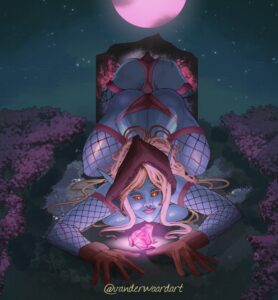


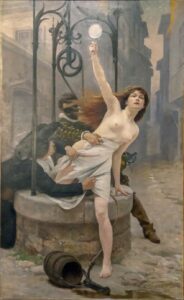






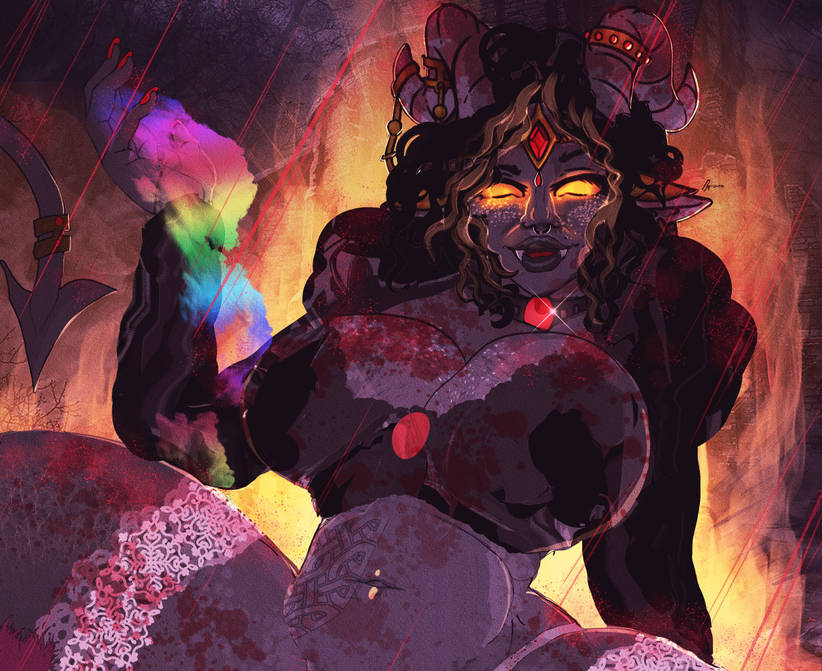


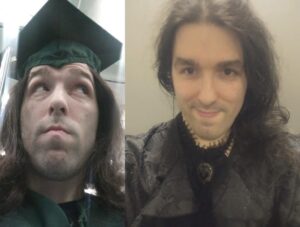

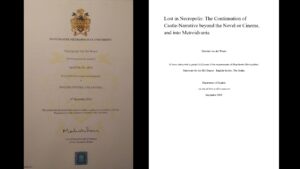














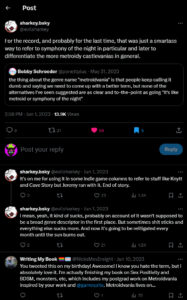


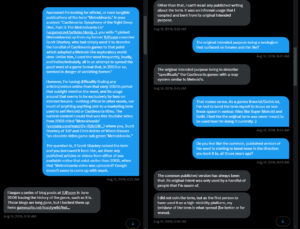

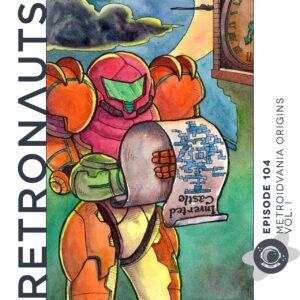
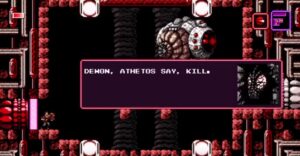
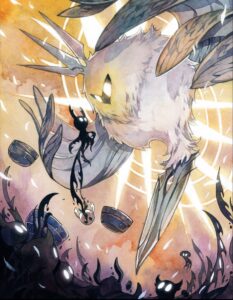








Comments
Post a Comment